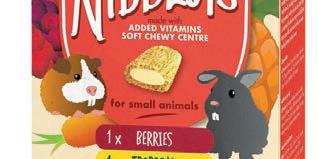






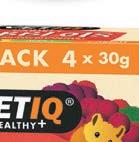











































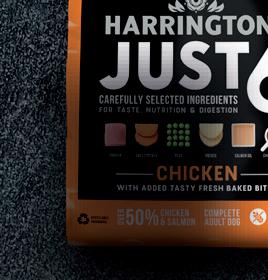






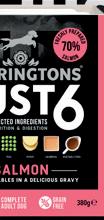

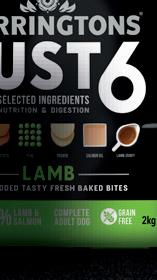




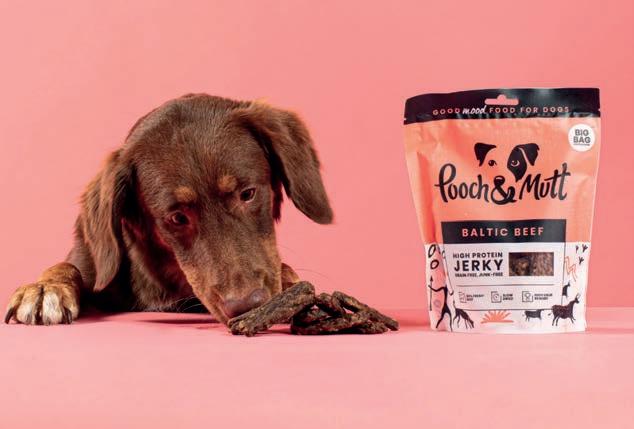
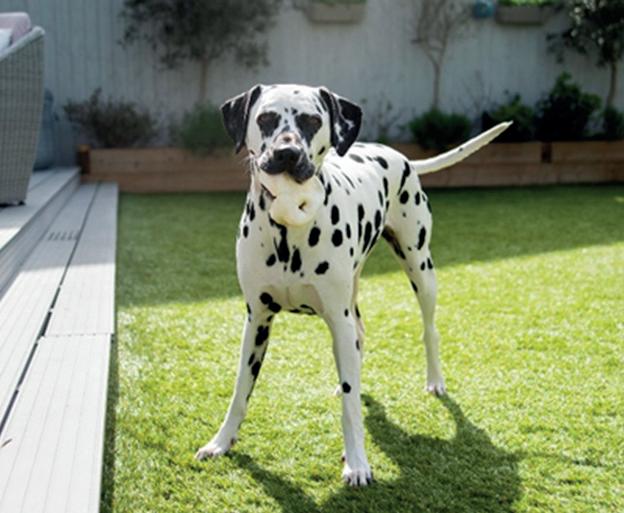
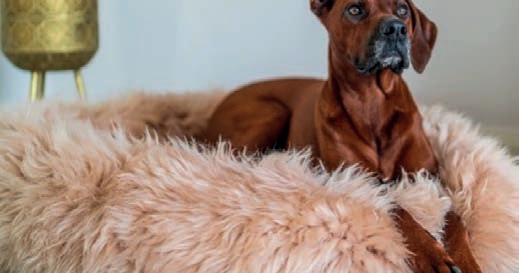
















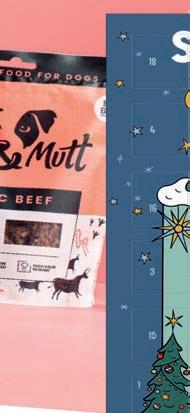



























































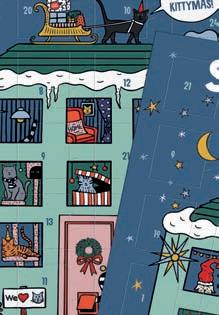
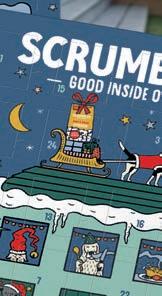


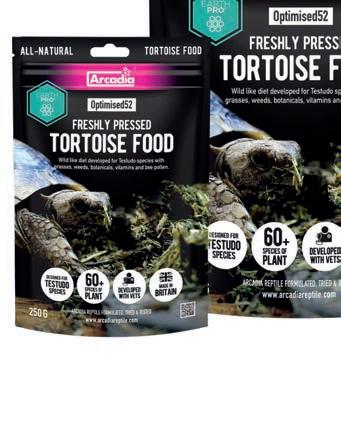

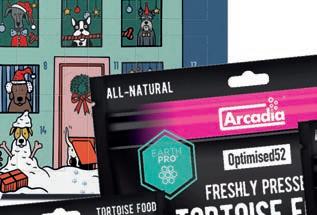









Top tips and products to share with pet owners For independent pet retailers October 2022www.petproductmarketing.co.ukw Pet advice ● Dog advice: Learning through play ● Cat advice: Making end of life decisions ● A beginner’s guide to hamsters ● Customer Q&As OVER 50% MEAT & FISH BLENDED WITH FARM GROWN VEGETABLES EASY TO DIGEST GRAIN FREE RECIPE WITH ADDED TASTY FRESH BAKED BITES EXCLUSIVE TO PET SPECIALISTS Be prepared forBusinessHalloweenadvice: The pitfalls of incorporation ● The indelicate matter of pay ProductsNew
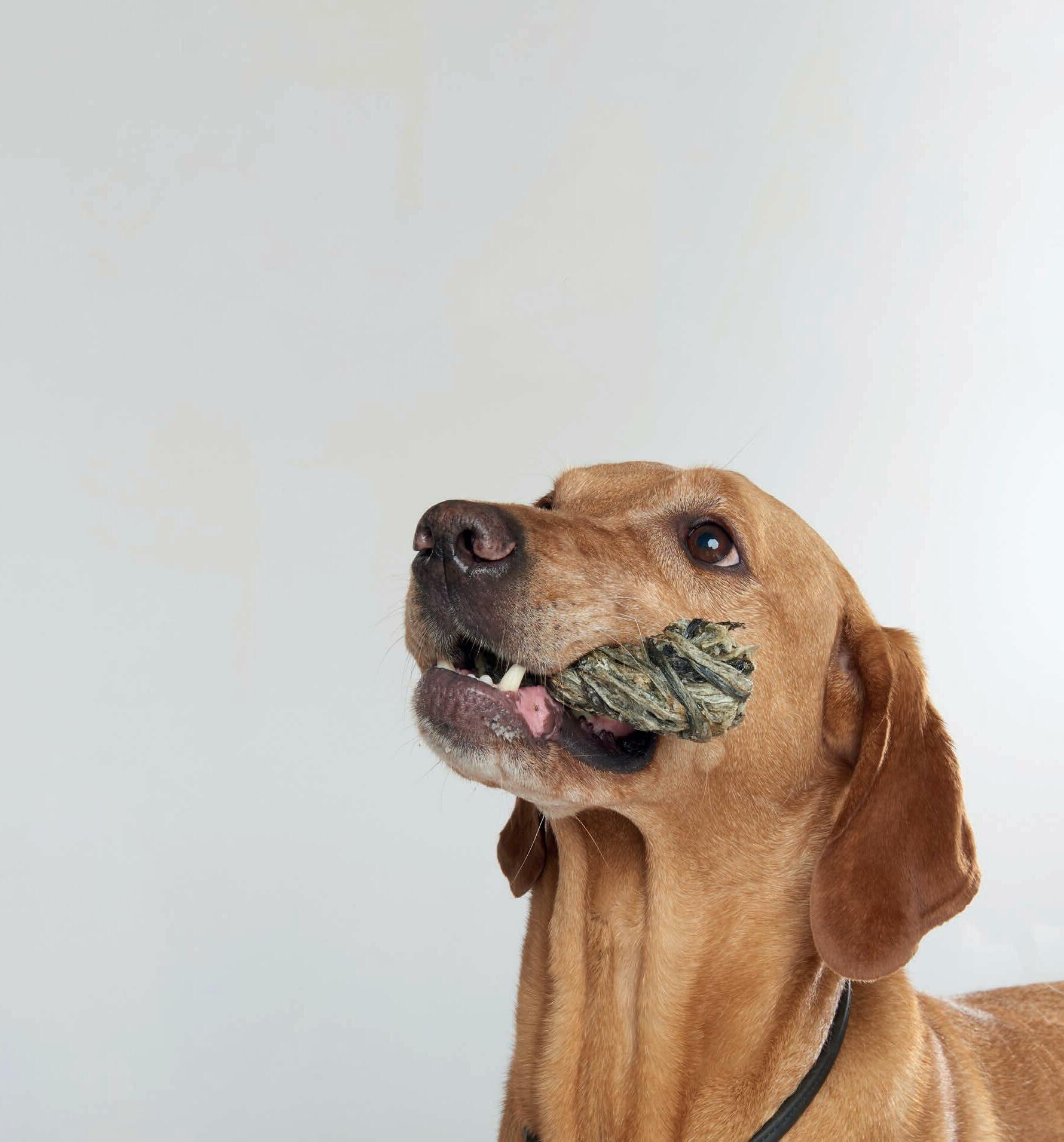

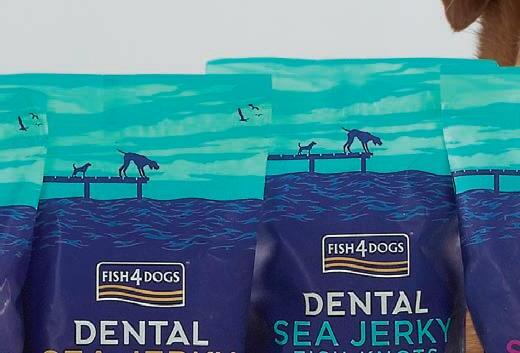
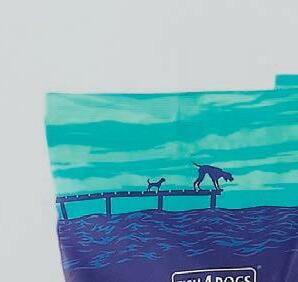


had a timely reminder recently that we work in a fantastic industry. I was chatting to someone new and when asked what I do for a living, we got talking about pets. It was amazing how well the conversation went as soon as we started talking about animals. It breaks down barriers and is always a comfortable topic to chat
Whileabout.itisnot always wise to mix business with pleasure, that is certainly not the case for the pet trade. It’s great to work with pets at the forefront of our minds. Of course, we all want to make a living and profits, but we can still enjoy working in a space where we all want the best for pets.
I think that is something that is really powerful to remember. When people come into your shop, your interactions with them will go such a long way. Just asking a question about their pets opens up those conversations and being a source of advice is one of the best assets of an independent pet shop owner.
In this issue, there is lots of advice and useful product recommendations. Helping pets and making sales, it really is a win-win!
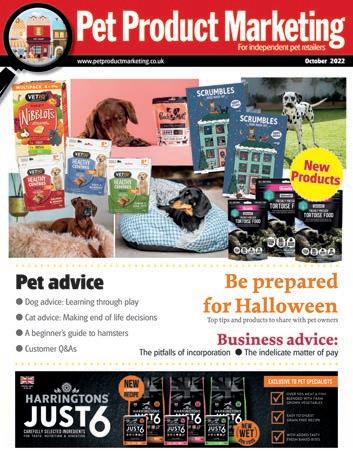
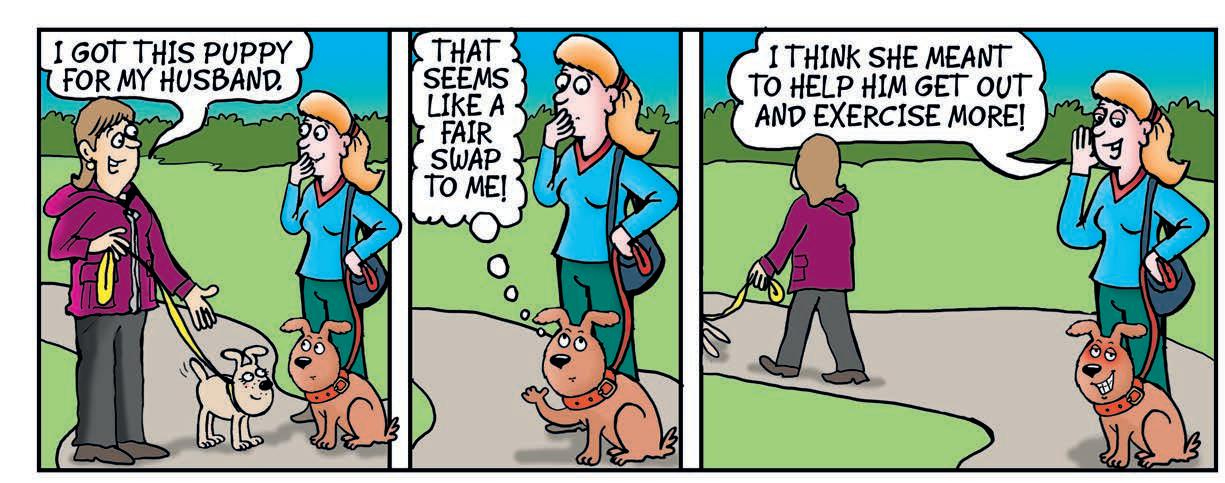 Mike Mike Hallam - Editor, michael.hallam@warnersgroup.co.ukPPM.
Mike Mike Hallam - Editor, michael.hallam@warnersgroup.co.ukPPM.
Our email: editorial@petproductmarketing.co.uk

Our address: Pet Product Marketing, Warners Group Publications, The Maltings, West Street, Bourne, Lincolnshire, PE10 9PH
Michael Hallam, editor
(for news and product releases, contact Michael on michael.hallam@warnersgroup.co.uk)
For advertising queries please contact Stephen Tanner on 01778 392404
Laura Wright, features and web editor
Ellis O’Connell, marketing exec
With grateful thanks to Sarah Wright (editor, Your Dog), and Nathan Hill (editor, Practical Fishkeeping)
Nigel Fish, design and production manager
Natalie Reynolds, production controller Graham Warren, colour repro
Stephen Tanner, key account manager (advertising Pet Product Marketing/Practical Fishkeeping)

Andrea Walters, key account manager (advertising Your Dog/Your Cat)
Kay Cotterill, classified sales (all titles)


Regular contributors: Adam Bernstein, Claire Hamblion and John Courteney-Smith
Printed by Warners Midlands plc
James Buzzel, publisher
Subscriptions and back issues
Pet Product Marketing is available free to people who qualify for our controlled terms of circulation. If you’d like to register for a free subscription, please visit www.petproductmarketing.co.uk
Welcome! by Richard Duszczak Product Marketing is published 10 times a year by Warners Group Publications. No part of the magazine may be reproduced in any form in whole or in part, without the prior permission of Warners Group Publications. All material published remains the copyright of Warners and we reserve the right to copy or edit any material submitted to the magazine without further consent. The submission of material (manuscripts or images etc) to Warners Group Publications whether unsolicited or requested, is taken as permission to publish that material in the magazine, on the associated website, any apps or social media pages affiliated to the magazine, and any editions of the magazine published by our licensees elsewhere in the world. By submitting any material to us you are confirming that the material is your own original work or that you have permission from the copyright owner to use the material and to authorise Warners Group Publications to use it as described in this paragraph. You also promise that you have permission from anyone featured or referred to in the submitted material to it being used by Warners Group Publications. If Warners Group Publications receives a claim from a copyright owner or a person featured in any material you have sent us, we will inform that person that you have granted us permission to use the relevant material and you will be responsible for paying any amounts due to the copyright owner. We cannot accept responsibility for unsolicited manuscripts, images, or materials lost or damaged in the post. While every reasonable care is taken to ensure accuracy, the publisher is not responsible for any errors or omissions, nor do we accept any liability for any loss or damage, however caused, resulting from the use of the magazine. team Product Marketing
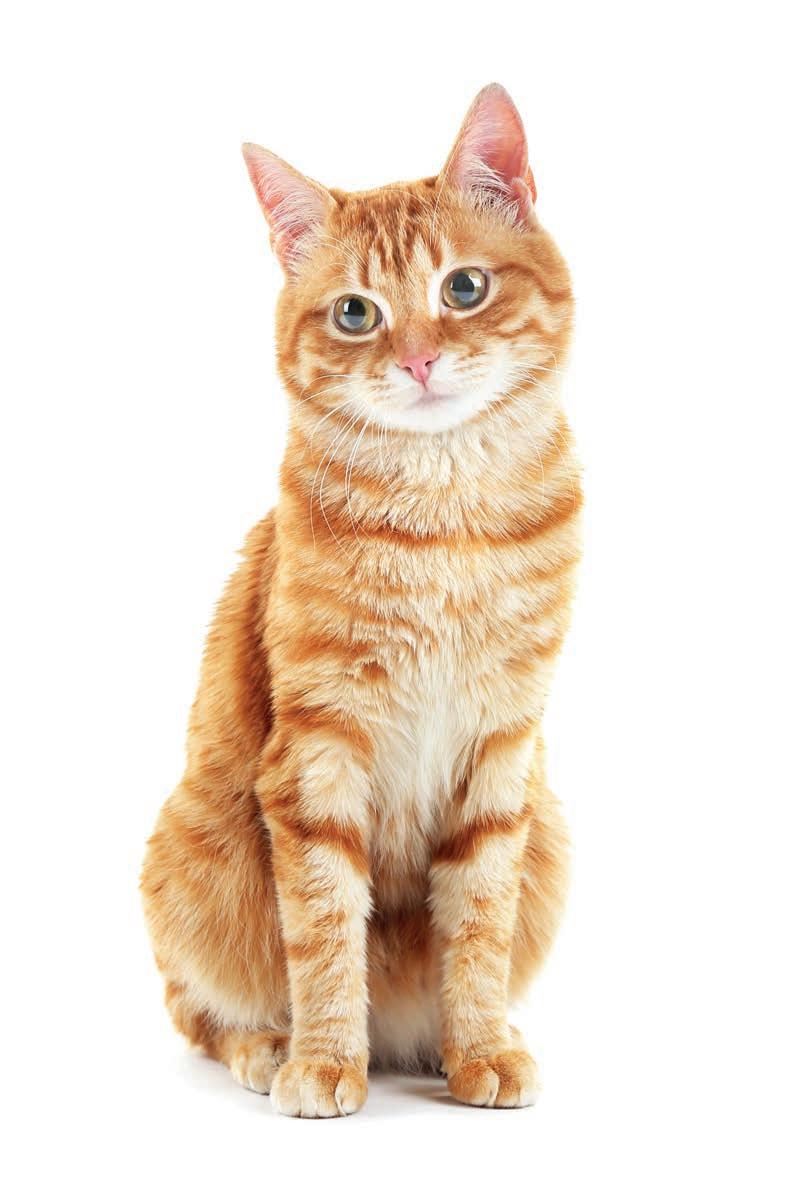
Welcome 3
www.petproductmarketing.co.ukI
4 News The latest news from the pet industry. 8 New products The newest products hitting the market. 12 Don’t get spooked How you can help pet owners prepare for Halloween. 14 The pitfalls of incorporation What to consider if you’re thinking of incorporating. 16 Fun and Games How dogs learn best when they’re having fun. 18 The hardest decision How to approach deciding to put a cat to sleep 20 A beginner’s guide to hamsters Supreme give a rundown of what you need to know about these small furries. 22 Reptile care Expert advice on feeding reptiles. 24 The indelicate matter of pay How to handle pay. 26 Customer Q&A solutions Pet dilemmas you can use to help your customers. 30 Breaktime read The incredible transformation of a dog who went from recscue to the stage. Contents SCRAGGS
Pet
Your
Pet
October 2022 Y
Bella & Duke’s recruitment drive as a Real Living Wage employer
Leading pet food subscription company Bella & Duke has recently been accredited as a real Living Wage employer and is now looking to recruit new team members.

Bella & Duke has launched their latest recruitment drive with 10 new Customer Care Advisor positions open to applicants in their pet-friendly office.
On a mission to help pet owners in giving their pets the healthy, happy, and long lives they deserve, the new roles will provide valuable support to their growing customer base. The firm’s direct-to-consumer model means they’re looking for employees that will get to know their customers and their pet’s individual needs on a deeper level.
The full-time positions will be based in the new Parklife office in Rosyth, which has been designed specifically to accommodate the needs of team members’ pets including cats and dogs.Aswell as having a state-of-the-art space to work from, Bella & Duke’s latest Real Living Wage commitment will see everyone receive a minimum hourly wage of £9.90 per hour. This Real Living Wage rate was announced in November 2021 as part of Living Wage Week and is significantly higher than the Government minimum for over 23s, which currently stands at £9.50 per hour (from 1 April 2022). Employers choose to pay the Real Living Wage on a voluntary basis, recognising the value of their workers and ensuring that a hard day’s work receives a fair day’s pay.
Those looking to join the leading pet food subscription company will be in charge of dealing with all of the customer’s needs and alterations to their subscriptions and must be able to work in a fast-paced environment, offering timely solutions to any customer
Beaphar FIPROtec ® Spot-On range gets a new look
Pet healthcare company Beaphar have announced their new-look packaging of the popular flea and tick product Beaphar FIRPOtec® Spot-On.

Clare Fuller UK Marketing Manager said: “We are delighted with the new packaging and believe that it gives the range a fresh and distinctive look and feel aligned with the Beaphar brand. It still contains the same active ingredient, providing an affordable vet-strength option to help fight fleas and ticks.”
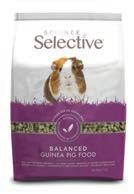
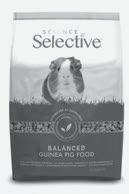

Beaphar FIPROtec® Spot-On is part of an extensive range of flea and tick offerings from Beaphar, others include Beaphar Canishield®, a medicated collar for dogs which provides long-lasting protection against fleas, ticks and sandflies, and Beaphar FIPROtec® COMBO, a dual-action spot-on which is tough on fleas and their eggs. For more information on stocking Beaphar products, please contact your Beaphar Sales Executive, or the customer service team, who can be contacted on 0333 006 6236
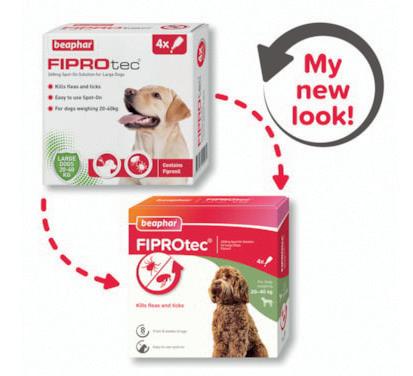
PIF launches new benefit to improve mental health
The Pet Industry Federation (PIF) has announced a new partnership with Leafyard, a ground-breaking mental health web app.
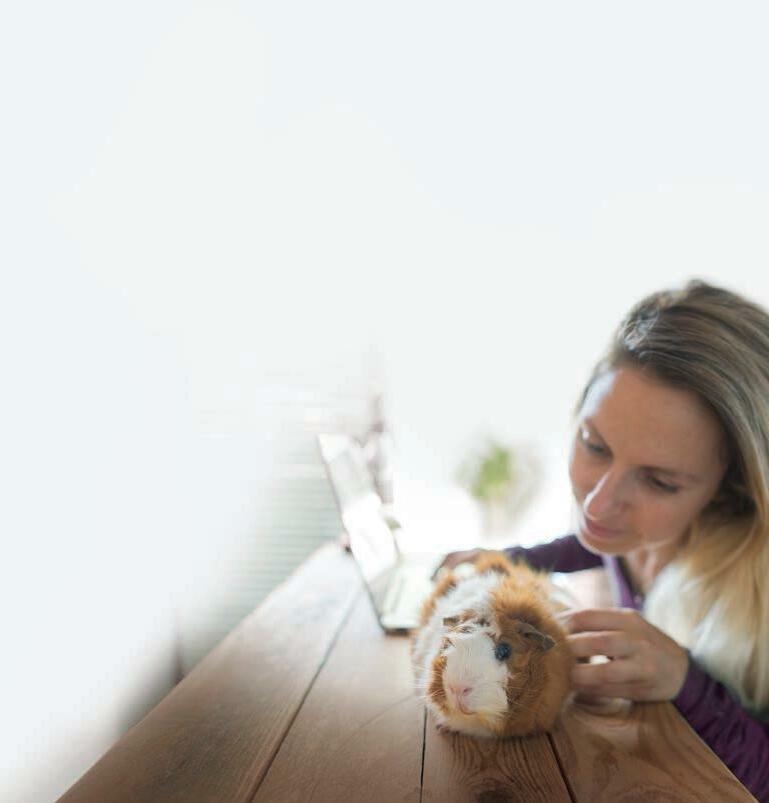
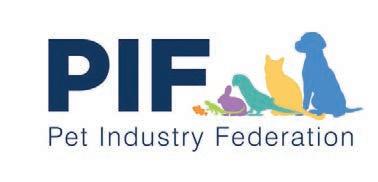
It has never been more important to have a strong, resilient mindset which is why Leafyard is packed full of techniques that are crucial for developing a positive, successful mindset: from sports psychology to resilience training, to positive thinking and visualisation, as well as exercise, habits, diet and much more. Leafyard’s strategic approach means it is possible to make progress every single day.
PIF CEO Nigel Baker explains the rationale behind the partnership with Leafyard: “After the last couple of years that business owners have faced, it’s wise for all of us to check in with not only our own mental health, but with our team and organisation’s mental health.
“Partnering with Leafyard to enable PIF members to receive a 25% discount on Leafyard subscriptions is a great step forward; this is a comprehensive and forward-thinking solution that has proven results.”
PIF members will be emailed details of how to claim their 25% discount. To join PIF today, visit www.petfederation.co.uk
queries. Going from strength to strength and growing year after year, Bella & Duke is looking for energetic, enthusiastic employees that are happy to go the extra mile for their ‘pack’.
The successful candidate’s role will •Callinginvolve: new customers, welcoming them to the pack and helping them get the best from their journey with Bella & Duke. •Building a relationship with customers and helping them manage their subscriptions.
Mark Scott, Co-Founder of Bella & Duke said: “Our employees are just as much of our pack community as our customers, so it was a no brainer when it came to becoming a Real Living Wage employer. Going from a team of two to over 130, we never underestimate the hard work each of our employees has put in throughout the years, without them we wouldn’t have gotten to where we are today. We hope this latest accreditation is a small token of our gratitude to the value they bring to the company and we look forward to growing it more in the years to come.”
To find out more, visit: https://www.bellaandduke.com/join-our-team/customer-careadvisor/


FORFOODLIFE. You want your customers’ pets to live a long and happy life, so choose to stock Selective, tailored nutrition to help support small pets’ digestive health and vitality for all life stages and lifestyles. • HIGH IN FIBRE • NATURAL PREBIOTICS • NO ADDED SUGARS • OMEGA 3 & 6 SELECTIVE. FOR EVERY STAGE IN LIFE RECOMMENDEDBYVETSsupremepetfoods.com Pet RetailerMarketingProductRecommendedAwards 2022 WINNER Small Animal Product of the Year
October 2022 www.petproductmarketing.co.uk News PPM4 NEWS October 2022 NEWS
New accreditation for raw pet manufacturersfood
Leading raw pet food brands are celebrating new independent accreditation developed specifically to ensure quality and safety of raw feeding.
Partly owned by the Raw Feeding Veterinary Society (RFVS), the RawSAFE accreditation involves rigorous audit of all areas of raw food manufacturing, holding businesses to the highest standard possible.Foodsafety has always been one of the primary concerns of the veterinary profession and raw meat industry. After years of poor regulations around pet food manufacturing, RawSAFE was born to create a set of robust standards for raw meat-based diets for pets, with the standards based on those in human food manufacturing.

Pet owners or veterinarians who choose a product with the RawSAFE label can be reassured of best in practice and more importantly, safe production of pet food. Here we hear from a couple of leading manufacturers who are among the initial companies to receive the RawSAFE accreditation:
withcontractsecuresPetBugalugsCareAsda
British pet care brand Bugalugs Pet Care has secured a nationwide contract with giant supermarket retailer Asda. This will see a range of Bugalugs products on the shelves of over 220 Asda stores across the UK.
Established in 2020 by founder and managing director Lee Dobinson with his dog Max, AKA Bugalugs, being the forefront of the brand, Bugalugs has since seen a substantial growth in the pet care industry. This includes entering many independent stores as well as other major pet retailers.
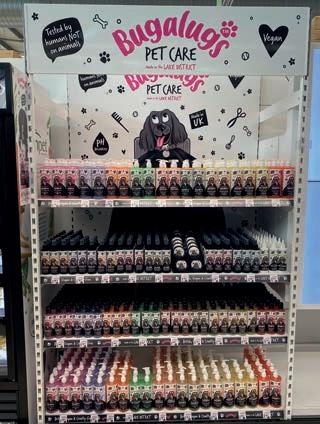

Lee commented: “Securing this contract with Asda has been a very exciting venture for Bugalugs Pet Care. It has been a pleasure working with the Asda team, their approach to working with SME’s has blown us away. We can’t wait to see where the brand will go next.”Known in the pet care industry for their bright, bold, and quirky branding, Bugalugs Pet Care offers a wide range of vegan and cruelty free dog grooming products. Manufactured in the brands own family-owned factory in the UK’s Lake District, the range includes shampoos, colognes, balms, ear care products, and more. You can be sure to find something you and your dog loves at Bugalugs Pet Care.For trade enquiries, contact Bugalugs by email sales@ lakelandcosmetics.co.uk or call 01900 837942
Ian joinsBlincoALF
ALF Aquatic Distributors are very excited to have a new team member joining their family, in a completely new role.
They are delighted to announce that Ian Blinco is joining the Sales Team as New Business and Strategic Account Manager. Ian will be responsible for strengthening the brands and building strong working relationships with new and existing clients both in the UK and further afield.
Ian is joining after 14 years at CascoPet and brings a wealth of knowledge and experience across all sectors of the global Aquatic Industry. ALF commented: “This appointment builds on the excellent work already carried out by our team and will continue our growth over the coming years.”
Tyler Daly, CEO of Paleo Ridge, said: “We are very proud that Paleo Ridge is officially RawSAFE certified. Our focus is always on the health and well-being of dogs and the accreditation is testament to the high quality of our food and manufacturing processes. Manufacturing standards can differ greatly from business to business. It’s very important that there is now a standard which oversees and regulates the manufacture of safe, healthy pet food that consumers can buy with confidence and that vets can stand behind.
“At Paleo Ridge, we pride ourselves on implementing an industry leading, best practice approach. We go above and beyond in sourcing, welfare, nutritional testing, and manufacturing. The new certificate will reassure customers that our products meet the highest possible standards, improving the reach and reputation of the Paleo Ridge brand as we seek to help dogs nationwide live happy and healthy lives.”
Tony Ottley, Director of Bella & Duke said: “As the raw food market and pet owners’ demand for the highest quality food continues to grow, it is incredibly important that manufacturers like us are also challenged to produce to the highest standards. We’re committed to our customers and assuring them they are choosing the best quality food available.
“We have invested heavily in not only our factory but our team of experts, ensuring that the highest standards of raw pet food production are being met. Having the new RawSAFE accreditation is a huge step forward for the pet food industry as a whole and gives reassurance to customers and veterinarians that standards are being monitored through a vigorous process of auditing. We are delighted to have been one of the first pet food manufacturers to have been accredited.”
For more information on RawSAFE and the new accreditation, visit: www.rawsafe.co.uk
Paleo forPeakstakeexecutiveRidgeteamonThreeChallengecharity
The executive team at Paleo Ridge, producer of high-quality raw dog food, completed the Three Peaks Challenge while fundraising for Many Tears Animal Rescue (MTAR).
The Paleo Ridge team taking part — including CEO Tyler Daly, Director of Sales and Marketing Will Green, Director of Supply Chain Chris Jones, and Head of Operations Dainius Kinta — climbed the highest mountains in England, Wales, and Scotland.

Setting off at 6am on the day, the team climbed Scafell Pike, Snowdon, and Ben Nevis, with the latter being the tallest at 1,345metres high. The total walking distance covered during the challenge was 23 miles and the total ascent was 3,064metres.
Taking on the Three Peaks Challenge for charity is part of Paleo Ridge’s commitment to supporting those in need. The brand has worked with Many Tears Animal Rescue for over six years. MTAR is a charity based in Wales that supports dogs in foster homes across the UK, predominantly re-homing ex-breeding dogs who have been discarded but also rescuing those on ‘death row’ at local dog pounds and those whose owners can no longer care for them.
Tyler Daly, CEO of Paleo Ridge, said: “When we were tired, dehydrated and sore at points of the climb, it was the thought of the dogs at Many Tears Rescue that helped us to push through the challenge.”

HayPigs! help revamp Suffolk Guinea Pig Village
HayPigs! has helped to revamp the Guinea Pig Village at Jimmy’s Farm & Wildlife Park in celebration of 20 years of family, food, and fun at the much loved family attraction.
As the new sponsors of the Guinea Pig Village at Jimmy’s Farm & Wildlife Park in Suffolk, award-winning guinea pig and small animal brand HayPigs!®, have designed and built a collection of guinea pigsized houses for the resident piggies. The pint-sized builds include a café, nail bar, church, pub, and convenience store, each lovingly designed and crafted to provide not only a visual treat for visitors, but also an exciting enrichment environment for the piggies!
“This really was a dream project for us,” exclaims co-founder Rik, a professional product designer before he launched HayPigs!®. “It’s something we’ve always wanted to do and if we were going to do it, our mission was to make it the best guinea pig village in the world!”
The project comes on the back of series of collaborations with Jimmy’s Farm which has included installing a large ‘Pig Top’ circus tent and selling HayPigs! enrichment toys and treats in the Farm Shop. It helps celebrate 20 years of family, food and fun at Jimmy’s Farm.
“We love working with Jimmy’s Farm; they have the same sense of fun and adventure that we do and really care about their animals. All their staff have been so helpful and it’s just an absolute pleasure working with them.”Theresident guinea pigs at Jimmy’s Farm were quick to celebrate their new village, enjoying breakfast at the café, an afternoon’s pampering and pedicure at the nail bar, and an evening of raucous wheeking at the pub!
To watch Jimmy Doherty introduce the new Guinea Pig Village at Jimmy’s Farm & Wildlife Park, visit: www.petproductmarketing.co.uk/news/haypigsr-help-revamp-suffolk-guinea-pig-village/
The team at the top!
The Guinea Pig Village.
www.petproductmarketing.co.uk October 2022 5
▲
Your launchesCat Good Causes
Pet Product Marketing’s sister publication Your Cat has launched Good Causes, a new initiative that pledges at least 30% of subscription proceeds go to community cat projects in the UK.
Your Cat has always championed a better life for all cats, through sharing expert cat care advice, supporting campaigns to improve the lives of cats and owners, and inspiring cat lovers through its content. In an exciting new step, Your Cat is delighted to offer funds directly to help people making a difference to our feline friends.
By being a Your Cat Good Causes supporter, cat lovers are directly helping feline projects and are kept up to date with how their money is protecting the role of cats in our lives through their monthly magazine.
“Your Cat has a long history of promoting and protecting the roles cats play in our lives,”

Central Garden and Pet announces new Central DirectorsInterpet



Central Garden and Pet, a market leader in the garden and pet industries, has announced that it has appointed Adrian Exell as Commercial Director of Central Interpet.

Central Interpet is a UK based, leading manufacturer of aquarium, pond, and pet products. They offer leading brands such as Interpet, Blagdon, Kent Marine, Nylabone, Kaytee and more.


In his role as Commercial Director, Adrian is responsible for leading the Central Interpet business and brands. He brings a wealth of experience to this leadership role having worked at Interpet since 1987. Hired to lead Product Development by Neville Carrington, the founder of Interpet, Adrian has extensive knowledge of the aquatic, pond, and pet categories. Having led the Aquatic and Pet innovation and marketing teams at Interpet, Adrian is well positioned to continue to make Central Interpet a partner of choice for all areas of the pet trade for many years to come.
Adrian has a BSc in Fisheries science, has been Chair of the Board of OATA, and is a published author in areas of fish health and water quality.

In addition to Adrian’s appointment, Jason Booker will be assuming the new role of Sales Director as he fulfils a larger role leading UK and UK/ EU eCommerce sales. Previously Head of eCommerce and UK sales, Jason has helped drive growth across multiple categories. Jason has worked for Interpet for over 22 years and held roles across Sales, Marketing and Operations.
says Your Cat editor Michael Hallam. “We do that through sharing expert cat advice, promoting campaigns that will give cats more rights, highlighting the work of charities and rescue centres, and publishing stories to inspire cat lovers. It’s really exciting that we can now support those doing great things for felines with financial donations through Your Cat Good Causes. It means that every Your Cat member not only receives brilliant cat content, but is also directly supporting making the lives of cats better.”
The initial projects to receive money include a donation of £1,500 towards a statue to commemorate a cat who captured the heart of a community. Garfy — aka Mr Sainsbury — was an Ely icon until his death in 2019. He was often seen in the local supermarket car park, where his natural curiosity and friendliness saw him greet customers (and even enter the store at times!). When the local press ran a story about him, more people came to visit him and soon became a mini celebrity in the area. He’s even had two books written about him!The next projects will include providing cats with blankets and supporting a new rescue centre.Alongside
joining a community of cat lovers, subscribers will receive a monthly magazine, including all the latest news and updates on our welfare projects and progress on our campaigns – so people can see first-hand how your support is helping make cats’ lives
better.Readers can become a Your Cat Good Causes supporter for just £5 a month and at least 30% of proceeds will go to future community projects.
Visit www.yourcat.co.uk/store/subscriptions/your-cat/
Trial phase of PIF Export deliveredsuccessfullyScheme







The PIF Export Scheme successfully passed its Trial Phase recently with pallets travelling across Europe and safely delivered to their destinations.

The Trial Phase follows months of due diligence by the PIF team who, after hearing from members about export difficulties, have been working hard to create a scheme which enables manufacturers and suppliers to export products to the EU containing animal protein in a cost effective and efficient way.
Jonathan Rees, Director of Pero Foods, who took part in the Trial Phase commented: “Since Brexit, exporting products to the EU that contain animal protein has been significantly more complicated so we very much welcome the introduction of the PIF Export Scheme.”
Nigel Baker, CEO of PIF, added: “We are delighted to have completed the Trial Phase and look forward to facilitating weekly shipments in the near future. We would encourage any businesses interested in taking part in the scheme to register their interest as soon as possible.”Thenext shipment will take place this month — to receive a quote or to express your interest in booking pallets on to this delivery, please email Daniel Everett at export@ petfederation.co.ukThenextshipment is open to all pet businesses, however future shipments will be specifically for PIF members. To join PIF today, visit www.petfederation.co.uk
Manufacturer GWF Nutrition Expands White Label Portfolio
Animal feed and supplements specialist GWF Nutrition is expanding its white labelling and contract manufacturing portfolio.
The UFAS accredited company specialises in pelleted, crumb, meal, and oil-blended products and operates a dedicated facility in Wiltshire producing feed and supplements for many leading companies in the pet and equine sectors.
GWF Nutrition Technical Director Wesley Habershon said: “Our products are well known within the trade as high specification, high quality, and reliable formulations. With over 50 years’ experience and unrivalled nutritional and technical expertise, we are well placed to support brands with their specific production needs. We can produce bespoke formulations as well as white labelling already proven products or providing supplement premixes to enhance existing pet food ranges.”
GWF Nutrition recently added pet food brand Cotswold RAW to its list of trading partners with a multivitamin premix for a new raw cat food range.“We welcome enquiries from any brands looking for manufacturing support and would be very happy to discuss specific requirements on a strictly confidential basis.”

 Adrian Exell.
Jason Booker.
Adrian Exell.
Jason Booker.
Want to share your news? Got a story or new product? Pet Product Marketing share your stories and new product launches for free! Simply email Michael.hallam@warnersgroup.co.uk For all the latest news and new products, head to www.petproductmarketing.co.uk October 2022 www.petproductmarketing.co.uk News 6 For independent pet retailers M W






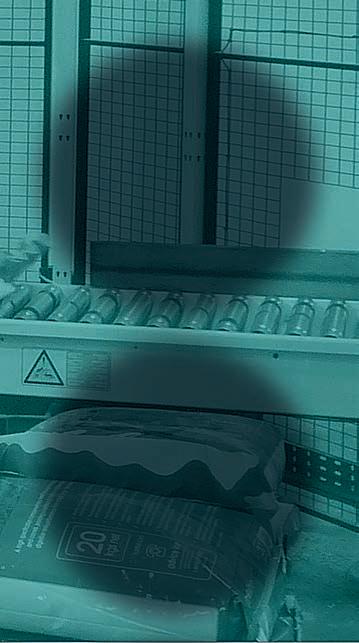
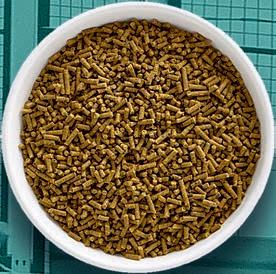
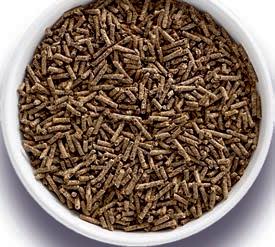
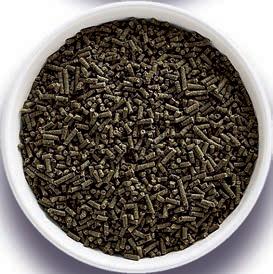

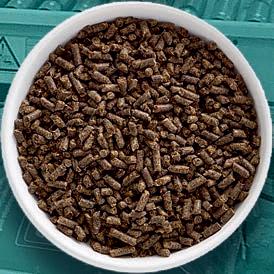






















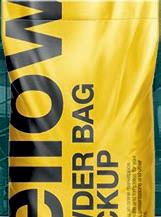





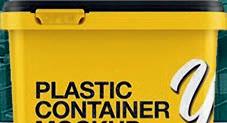
New necessities&








Variety Nibblots
The new Variety Nibblots™ Pack offers great value for your customer and the opportunity to buy more for less.

Mikki’s new additions to their Calming Bed range are guaranteed
kki’s new additions to their Cal to put pets in the ‘comfort zone’. an i and






















Created to help alleviate anxiety, the beds make a comfortable and relaxing environment that generates a sense of security while supporting the head and neck with their raised edges.
The new designs comprise a luxury Calming Donut Bed with self-warming faux fur, a Comfort Sleeping Bag that’s perfect for small dogs and cats who like to hide away, and a Domed Calm House that’s lined with a soothing faux fur while the outer features a classic blue check fabric finish. All the beds are machine washable and have a non-slip base making them safe to use on hard flooring surfaces.

The colourful and impactful pack, which contains four different flavours, will help to drive customer sales and gives the pet parent variety and choice to treat their pets.

For the retailer, it gives you the chance to use a brand leader to uplift your average purchase level. Same work, moreNibblots™spend.come in four delicious mouth-watering flavours: Apple, Carrot, Mixed Berries and Tropical. Each treat consists of a cereal shell filled with a soft fruity or vegetable centre. Nibblots™ are a source of Omega 3 and vitamins that help to promote healthy skin and coat and, of course, Nibblots™ help to promote bonding between the owner and their pet.
Available from most pet wholesalers. For more details, please contact Mark & Chappell on 01582 583888.
For more information, visit www.mikkipet.com or for trade enquiries email SalesEmail@interpet.co.uk or call 01306 873818.


Scrumbles advent calendars

The family-run, gut-friendly pet food company Scrumbles is back this festive season with its much-loved advent calendars. With a brand-new festive design and new mix of yummy, tummy friendly treats inside, the brand is set to give cats and dogs across the country the best Crimbo yet.


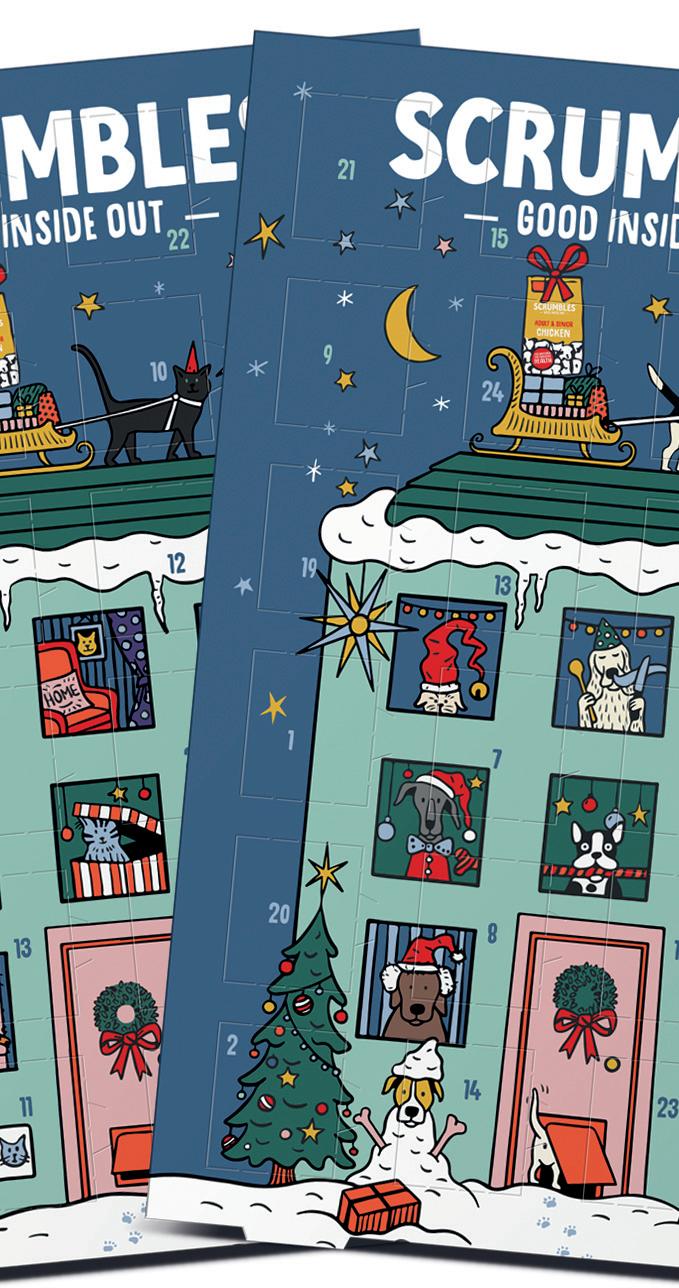

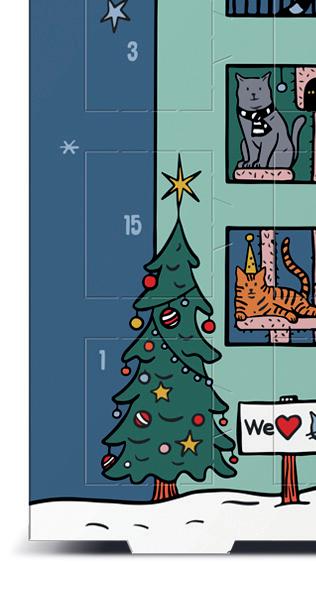
Since their launch in 2019, Scrumbles calendars have been a fixture on mantel pieces and Instagram feeds for pet parents every festive season. Now, the fourth year running, Scrumbles are expecting the most magical Christmas yet.
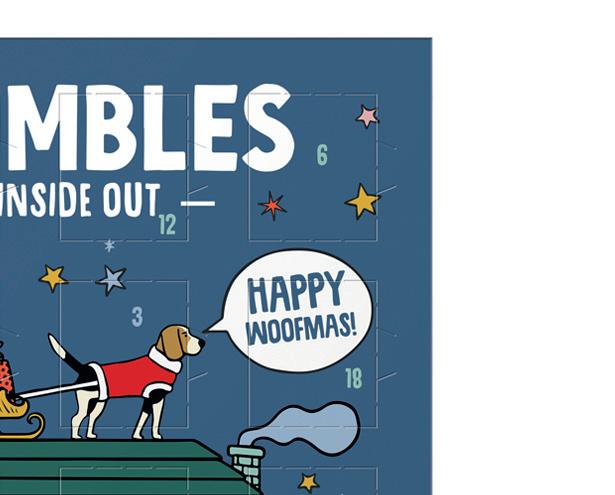
Each calendar boasts mini versions of Scrumbles guilt-free and gutfriendly treats which are hand-baked in small batches in the UK and packed full of tasty natural ingredients. Like all Scrumbles recipes, the treats avoid common allergens, and are free from added sugars, salt, and artificial nonsense.
Happy Woofmas Dog Advent Calendar: A trio of tempting treats including, Nibbles: Calming Treats, Meaty Chicken Bites, and Scrumbles best-selling miniaturised Gnashers Dental Bones.
RRP £7. Visit: https://scrumbles.co.uk/products/dog-advent-
HappycalendarKittymas
Cat Advent Calendar: A delicious duo of Meaty Chicken Bites and Gnashers Bites.
RRP £7. Visit: https://scrumbles.co.uk/products/cat-advent-calendar
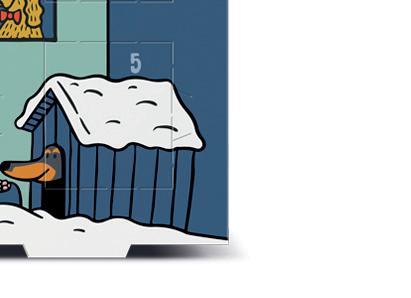
For trade enquiries, email
mbles is back this s. ly the yet. ve been a fixture on er y g ilt-free n the UK and es d ing treats and Scrumbles adventf Meaty vent-calendar
October 2022 www.petproductmarketing.co.uk Product highlights 8
hello@scrumbles.co.uket.co.uk
▲




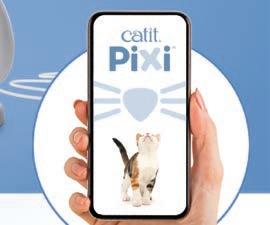
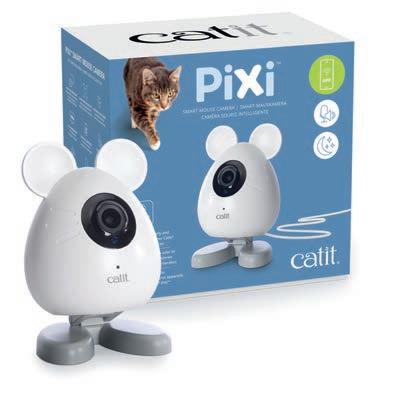



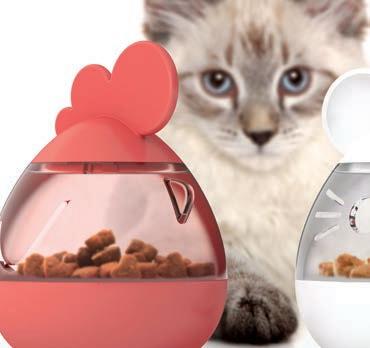







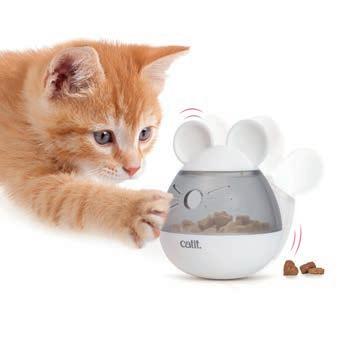

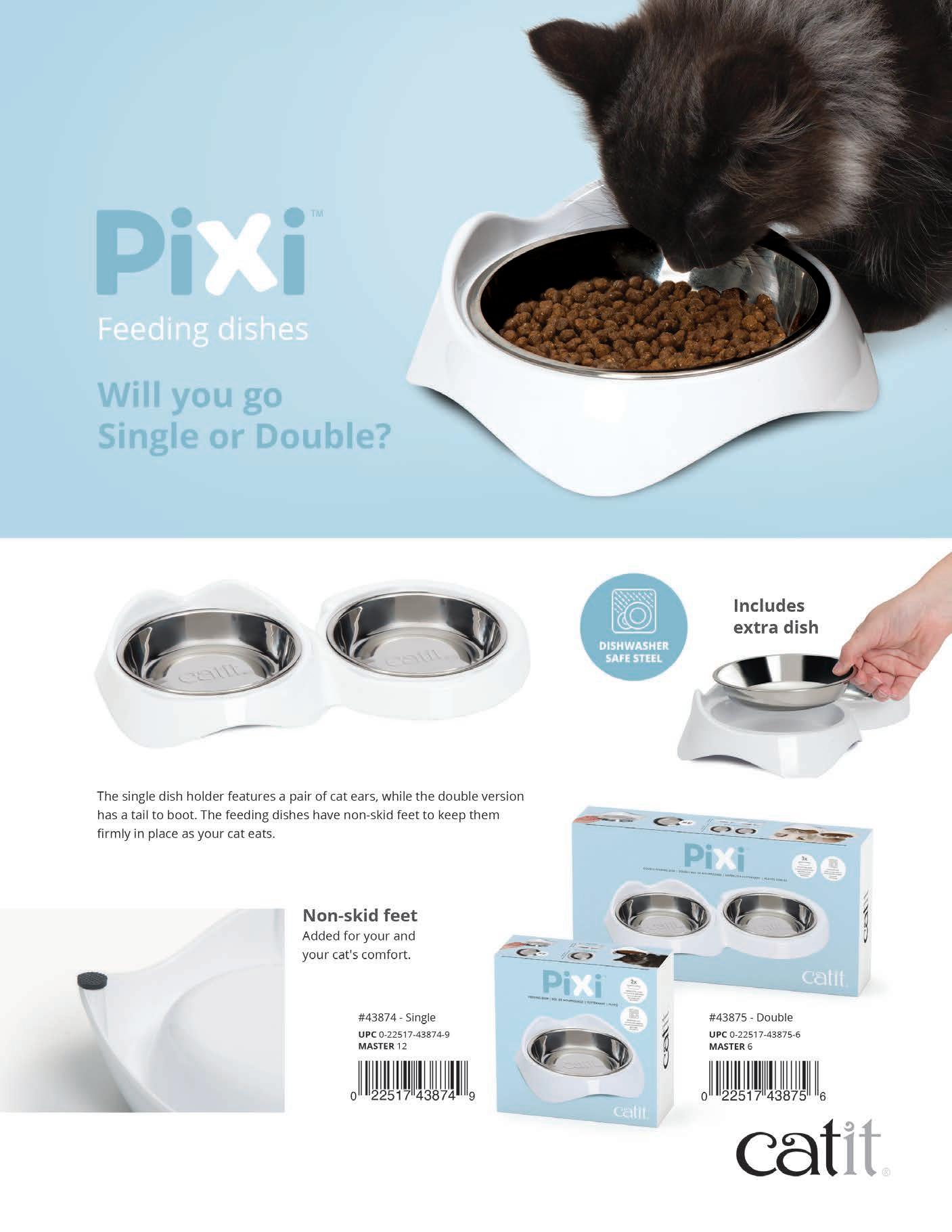

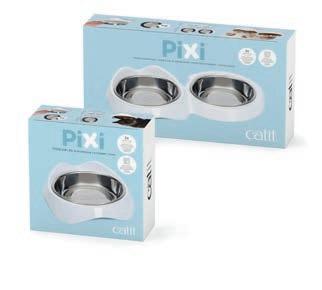







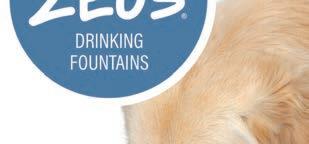

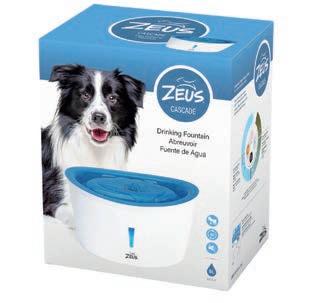





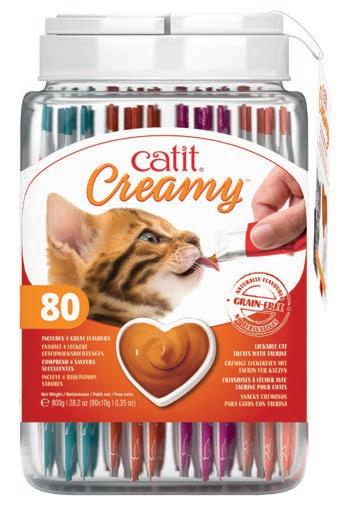



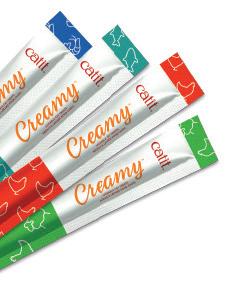
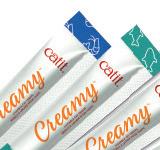



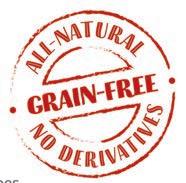
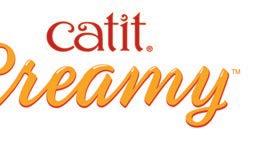




























































Your cat’s new best friend Smart CameraMouse Little critter with yummy treats SELF-RIGHTINGTOY cascade drinking fountains REUSABLENEW80TUBESJAR Treats Gift JaratstGiftJG Treat Dispenser REUSABLENEW80TUBEJAR TTre NEW! THIS MONTH For more information contact your Hagen Sales Manager or call 01977 556622 FROM
Pooch & Mutt Baltic Beef Jerky
Say hello to Pooch & Mutt’s brand new Baltic Beef Jerky, a protein-packed, pooch-approved meatyMadetreat.from 90% beef from the finest Finnish grass-fed cows and slow dried over 24-hours at low temperatures to lock in nutrients and moisture, these puppy-friendly, hypoallergenic treats make for the ultimate high-value reward for your pooch! Using all-natural ingredients and no grains, these succulent treats are sure to get your dog’s tail wagging:
● RRP £7.49 per bag
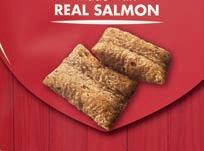


● Suitable for all breeds from eight weeks old








● Bigger bags to reduce waste and packaging
For trade enquiries, visit https://www.poochandmutt.co.uk/pages/trade
Doodle’s Deli natural treats
Introducing Doodle’s Deli, tasty rewards and natural treats brought to you by Pedigree Wholesale. The Doodle’s Deli range features over 70 air dried, loose treat lines, such as nose, ears, feet, across more than eight different proteins that are 100% natural.
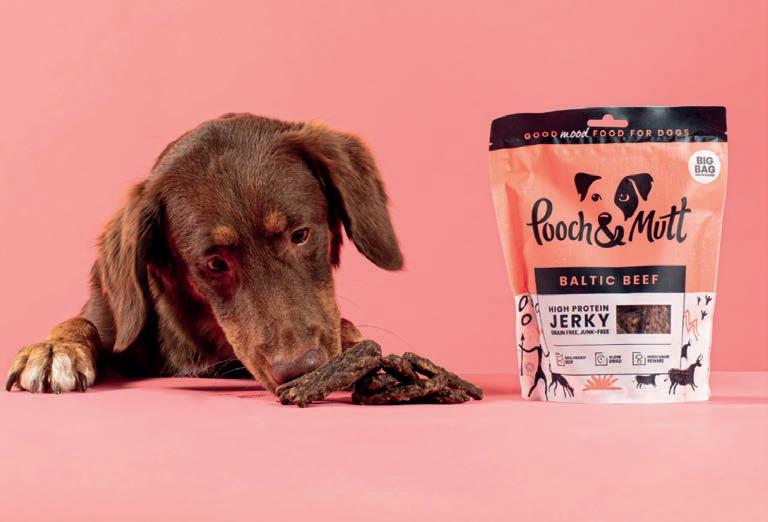
The product range is delightfully varied and ranges from Beef, Pig, Chicken, and even Camel treats, along with Lamb, Fish, Rabbit, Ram, and Goat. There is also a range of British-made sausages, such as Beef with Liver, Pheasant, and Partridge.
The treats in the range are naturally long-lasting and free from any artificial ingredients making them perfect dental chews. They may help dogs across various problem areas, such as supporting the removal of plaque and tartar buildup, promoting healthy joints, and helping strengthen jaw muscles.
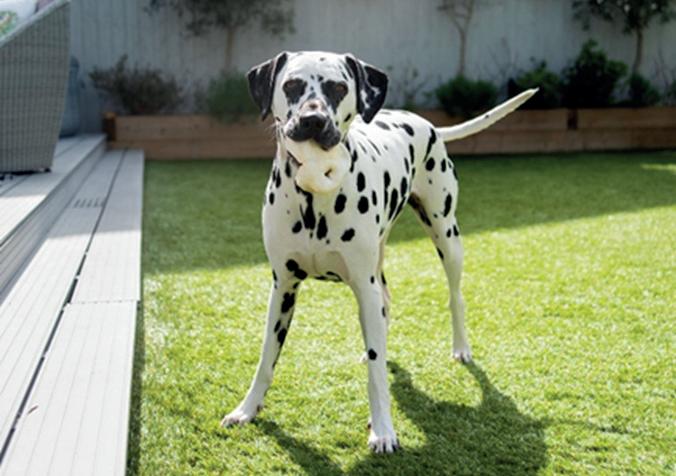
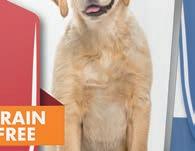




Doodle’s Deli treats are naturally low in fat. Many products contain naturally occurring vitamins, minerals, amino acids, and fatty acids, which is a great healthy add-on during treat time. Some treats in the range, such as rabbit ears, are hypoallergenic, making them perfect for dogs with sensitive stomachs. The Doodle’s Deli range is suitable for dogs over six months, with the sausages being suitable for dogs over four months.
The Doodle’s Deli range is a carefully considered addition to Pedigree Wholesale’s owned and exclusive brand portfolio, which is exclusive to the specialist pet retail sector. The range comes with free instore support and display solutions so retailers can sell the range with a strong first impression and impactful merchandising.
Interested in stocking the range in your store? Speak to the sales team at sale@petproducts.co.uk




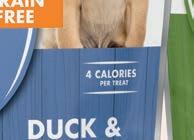




Healthy Centres dog’s diet. New VETIQ® Healthy Centres™ are tasty grain-free treats available in three delicious flavours. Perfect for dogs with sensitivity or intolerance to gluten or grains.
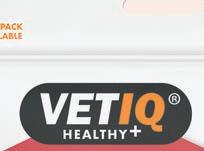
Each flavour has unique health benefits as well as being rich in essential Omega 3 & 6 fatty acids and containing no artificial colours or preservatives.

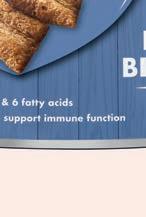
● Delicious VETIQ® Healthy Centres™ bursting with flavours





● Maximise the potential from grain-free

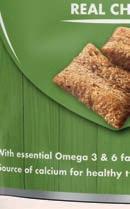



● Brightly coloured and attractive, matt packaging shouts from your fixture and encourages customers to buy





● Quality at an affordable price

Available from most pet Forwholesalers.moredetails contact Mark & Chappell on 01582 583888. r fixture and encourages fordable ost pet
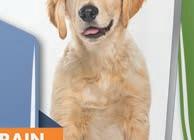
October 2022 www.petproductmarketing.co.uk Product highlights 10
grain-free dog treats New VETIQ® Healthy Centres™ are tasty grain-free treats available in three delicious flavours. More and more dog owners are seeking to reduce grain in their
8contact
Irish Woollen pet beds
When looking for a sustainable, natural product, wool is the answer — that’s the clear message from Irish Woollen Workshop.
With its natural fibres, renewable and thermo-regulating properties, wool is a popular choice for buyers who care about the environment and want a long lasting all year round luxury bed.
All of their wool is sourced in Ireland, where they have the best climate and grazing for the sheep. The beds are 100% Irish Sheepskin and supplied directly from Ireland, with a UK based Business Development Manager looking after the UK.
The design has a raised rim which creates a sense of security and provides head and neck support. The beds help to reduce anxiety in pets. While wool keeps the pet cool in the summer and warm in the winter.
The beds come in a variety of sizes from small up to XX large, and in a choice of colours grey, white, black, cappuccino.
The retail price for the dog beds start at £106 up to £140, depending on size.

After success of the pet beds in Ireland and USA, Irish Woollen Workshop are now launching this product into the UK market, with new lines being added to the range for Autumn/Winter.
If you are interested in stocking these products, please email to discuss this further:
michaela@theirishwoollenworkshop.coOptimised52tortoisefood
Optimised52 is an all-natural EU grown blend of at least 52 species of grasses and herbs with a further 10 plant species added into this base, all selected to provide optimal nutrition for pet Tortoises. It contains no cheap unnatural bulking agents such as almond nut shells or sunflower seed hulls. It contains no flours or waste material and has no added artificial colours, flavours, scents, or preservatives.
Optimised52 has been designed to provide optimal nutrition in a truly wild-like way.
Arcadia Reptile believes that EarthPro-Optimsed52 is the very finest, most nutritious pet tortoise diet available. The independently tested nutritional values rather speak for themselves. The food is mixed and pressed in the UK within small batch manufacture to ensure freshness. The food arrives as a tile, each tile weighs approx. 14g and contributes around 34g of nutrition when rehydrated per feed.

For more information, email info@arcadia-reptile.com
EBO AIR robotic companion
The EBO AIR represents the next evolutionary step for the home robotic companion, redefining the way people across the world interact, communicate and connect with one another.TheEnabot EBO Air is exactly the right size and shape to accompany a cat. It has a large front camera “face” and a speaker and SD card slot situated on the back. The camera has a crisp 1080p resolution and a wide 118-degree field of view. You get a 32GB memory card out of the box, but EBO Air supports up to 256GB via microSD. On the top, you’ll find both the microphone and another hole to attach a silicone feather accessory for your pet to chase.
The EBO Air speaker is loud, and the microphone works excellently. Since the pet camera has night vision, it automatically switches modes in low-light areas. This means that you can also use EBO Air for security monitoring at night, and there’s a dedicated security mode in the app to facilitate that. Once it’s in security mode, you’ll get notifications about suspicious movements. EBO Air can differentiate between pets and humans, so you don’t have to worry about your furry friends triggering the security alert. You can schedule EBO Air to come out and play and even decide if you want it to interact and perform tricks for people or animals. Each movement is accompanied by unbelievably cute sounds.

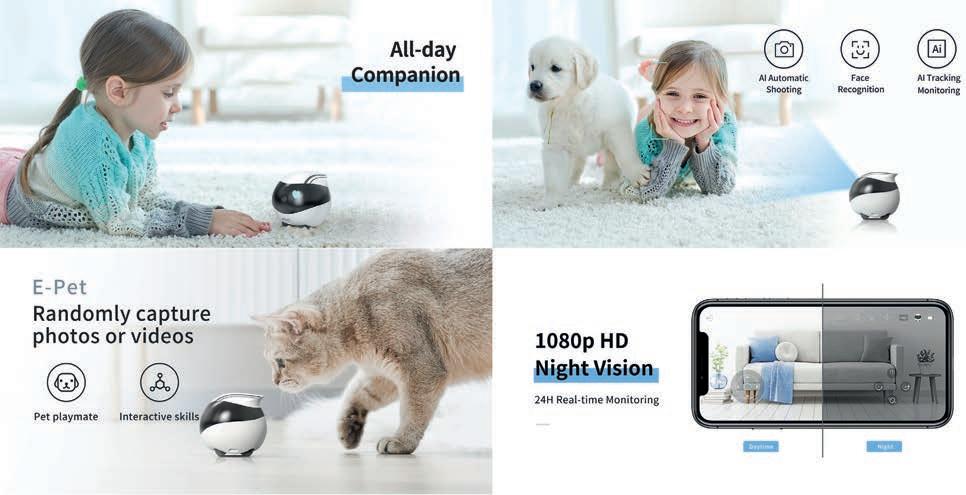
For trade enquiries, email sales@enabot.com


www.petproductmarketing.co.uk October 2022 11
Useful product
Pheromone diffusers for cats and dogs release natural chemicals that send messages of calm to our pets. These are often recommended by vets for stressful situations. Check the instructions as it can be beneficial to begin their use in the lead up to any potentially worrying event.



Halloween comes in October and it can pose a tricky time for pets and their owners. There’s the decorations, costumes, people heading from door to door, the doorbell going off, parties, and it is a pre-cursor to Bonfire Night. Here we share top tips you can share with your customers to get them through the spookiest time of year and flag up some products you could sell to help them do just that…







Keep them inside
It can be a dangerous time of the year for pets. While the spooky costumes can frighten our animals, there are also spikes in animal abuse incidents during Halloween. Protect your pets from any possible harm by keeping them safe in their home or ensuring your garden is secure during the evening.
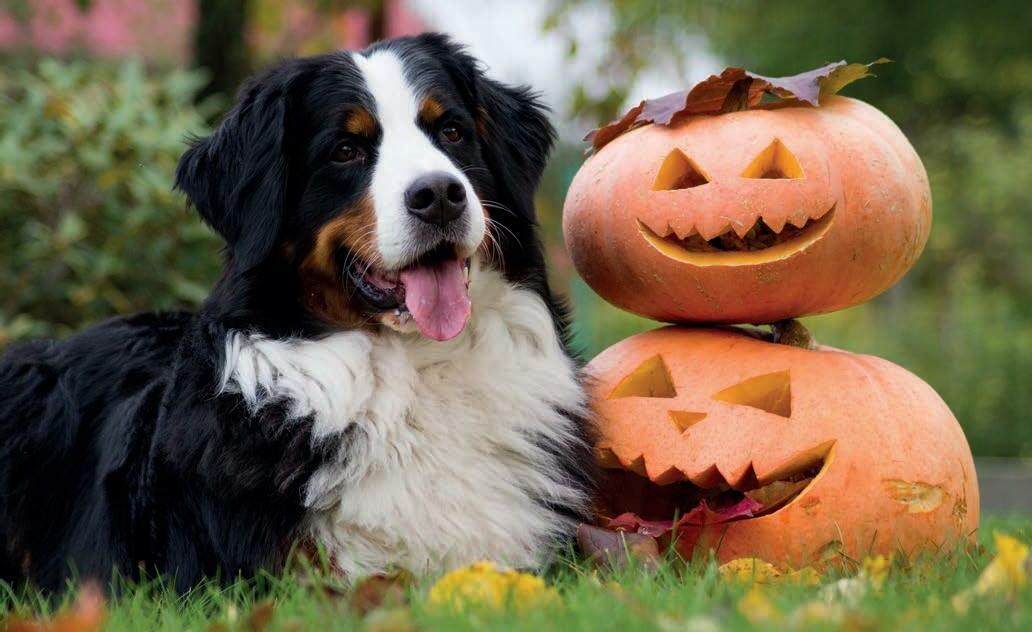
Keep them happy
If you have a cat or dog that usually has unlimited access to the outdoors or goes for an evening walk, they may not be happy about being forced to stay indoors during Halloween. Instead, make their indoor environment as enticing as possible. You can play games with them, offer tasty treats, leave treats hidden for him to forage for, or try puzzle feeders to exercise their brain. Giving them positive things to focus on will help your pets to relax. Don’t force pets to cuddle — if you seem anxious or worried, they will often pick up on that.
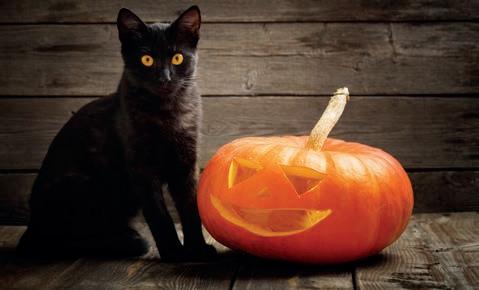
Tunnels and boxes
Small furries and cats will enjoy having new places to hideaway. Placing a tunnel in small companions’ enclosure is a great form of enrichment and can be reassuring. You know that cats love cardboard boxes too! Putting one of these in a great vantage point can create a stress-busting retreat.
enrichment.stress-bustingcancompanionsforTunnelssmallbe











Trick or Treat?
For nervous pets, being around loud noises, new faces, or wearing a costume can be distressing. Never force your pet to wear a costume that they are not comfortable in. If you are going out trick or treating, ensure your pet is settled and safe inside, in the warm. Plus, make a conscious effort to be cautious when opening the door to any trick or treaters, just in case your pet tries to make a run for the outside.
The doorbell
If your pet gets worked up by the sound of the doorbell, Halloween can become a tricky time for both you and your furry friend. To support them through this, it’s best to keep them in the room furthest away from the front door if possible, or let them hide away wherever they feel safe, and don’t try to tempt them out from hiding. If the doorbell rings and your pet is in the room, remain calm so you’re not likely to spook them.
Check

Useful product
Recommend to owners buying a particularly tasty treat for their pets. This will give animals something positive to focus on.


Hide sweets
Make sure to keep any sweet treats away from dogs and cats. As tempting as it may be to share your goodies, these can be toxic to our pets. Get them some of their own treats to enjoy instead!
A puzzle feeder for cats and dogs, or a treat stick hung from the cage of small furries will give pets a reward they will enjoy working for. This can give be a welcome distraction from anything that may stress them out. Useful product




Be careful of lit pumpkins





















Some people like to put candles inside carved pumpkins which pets may inadvertently cause a fire or burn themselves if they knock it over. Never leave your animal unattended with a lit candle, even when it is inside a pumpkin.





Ensure their microchip is up to date



For cats and dogs, ensuring their microchip details are up to date is essential. As if the worst happens and your pet does get scared and runs off, you want to give yourself the best chance of being reunited with your pet.

Halloween party
If you plan on having a Halloween party at your home, you may want to consider putting your pet in a confined room that no one will access. Or if you have a dog, perhaps a friend will look after them during the party. This will ensure that your pet is safe and won’t accidentally be allowed back outside by a careless party guest. Cats in particular always need a safe space to escape to and other animals including small companions will be better off away from the noise and any prying hands.
Stock Halloween products








People always want to involve their pet with celebrations and events. Check out Halloween themed products, such as pumpkin flavoured treats or Halloween toys, and consider stocking some in store — they could be the ideal boost to
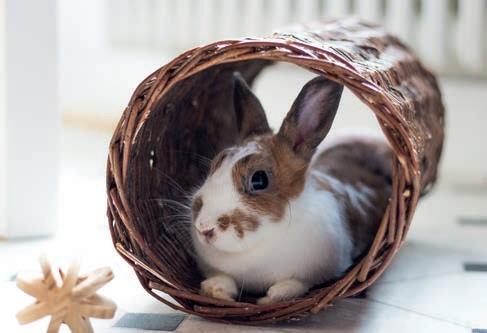
WhyUsefulsales!resourcenotmakeadisplayforyour





























customers on
Halloween? Feel free to use any of the tips here on a poster or on your social media. You can copy the text from above, there is no issue with copyright. With this feature written for pet shop owners, just check the advice makes sense to potential spooked







It’s the scariest time of the year, help your customers be prepared!
Be wary with lit pumpkins.
Puzzle
October 202212 www.petproductmarketing.co.uk
accidentabout,ItitaccidentwiththatItinsurancetheirisalwaysrecommendedpetsareinsuredbutthegreaterriskofanatHalloweentime,isworthcheckingyourcover.isalmostunbearabletothinkbutifyourpetwasinanorwasattacked,having a good level of insurance cover could be the difference between being able to afford the best treatment or not.
Don’tcustomers.get
feeders can be a welcome distraction. c istra
Seasonal advice
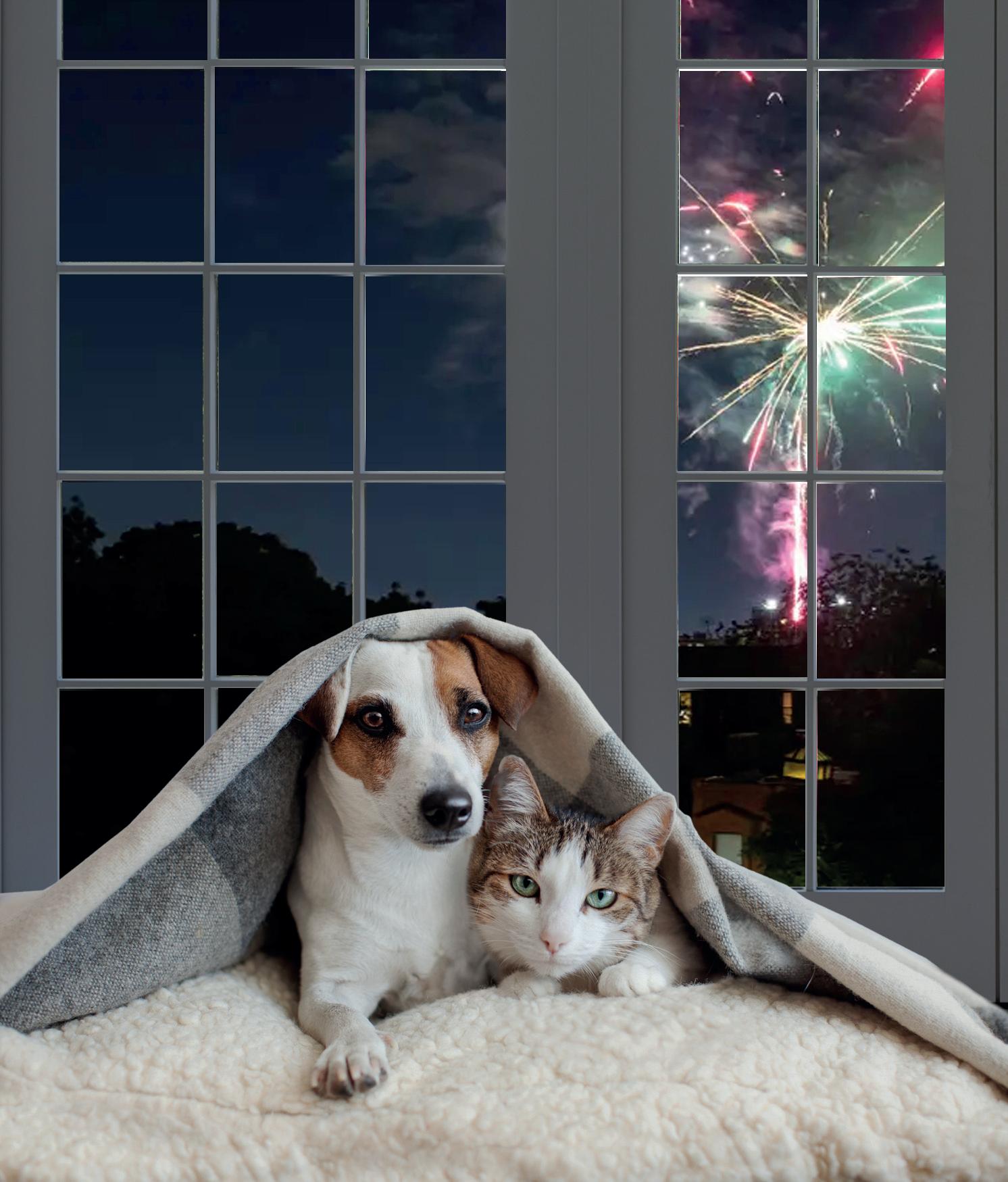


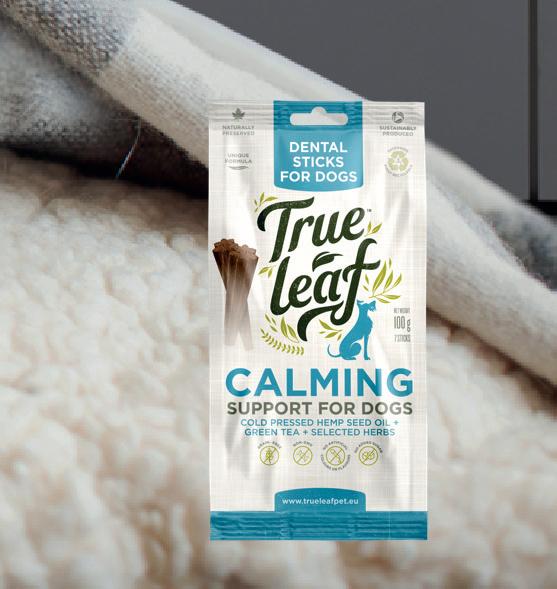

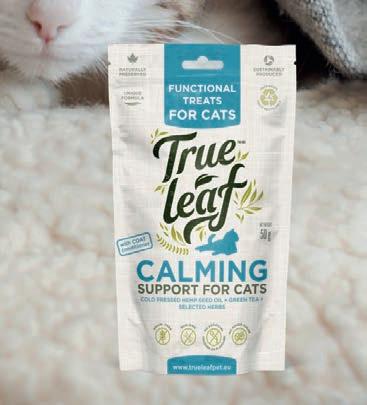
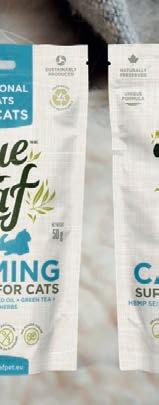



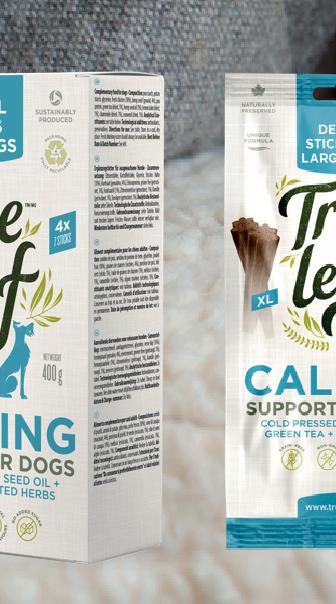
NATURAL GRAIN FREE GMO-FREE Reduce tension and keep calm the natural way. We know the difficulty of seeing our pets stressed from loud noises, separation anxiety and even our own mood swings. Our proprietary blend of Cold Pressed Hemp Seed Oil and Hemp Seed plus other natural ingredients work together to support your cat & dog’s overall health and reignite your pet’s natural zest for life. · Calming Dental Sticks for dogs of all sizes · Nutritional Calming Treats for both dogs and cats www.su-bridge.co.ukTel:01953882485For information and offers dgeco k Midlands Matt Bond 07730 529250 London & South East Tracey Clark 07894 586648 National Sales Manager Lynne07500Hopwood905739 South West Emma Frake 07747 031878 North East & Scotland Ian 07387Pullman023977 East Jacky Rees 07889 167348 East Liz 07827Matthews963931
Theproperty.
pitfalls incorporationof
AMarch 2022 case concerning a care home has highlighted some of the hazards and pitfalls of incorporation. Having run as a partnership for some 14 years, in 2009 the owners followed their accountant’s advice to incorporate. However, it does not appear that the owners familiarised themselves with the implications of incorporating and their duties on becoming directors. In fact, despite the change in its legal status, the business carried on largely as before, with transactions continuing through the partnership bank account, and the businesses suppliers and customers unaware of the company. Compounded by other tax issues, this laissez faire approach has now resulted in substantial tax liabilities and penalties which will potentially run to six figures for the owners.
Selecting the appropriate business structure is an important decision and it is not uncommon for a business to start as
either a sole trade, owned and operated by one person, or a partnership where there are two or more people, before incorporating into a company once the business is established and Incorporationgrowing.involves the creation of a new legal entity to which an existing business can be transferred. Where a business owner struggles with differentiating business and personal expenditure, then incorporation may not be a suitable option as it can be very easy to get into a mess. So where do owners go wrong when incorporating?
Separate entity

Being a separate legal entity, the company will need its own bank account and the funds in that account will belong to the company. A company is owned by the shareholders and run by directors and although in a small business these are often the same people, the assets of a company belong to the company, and the directorshareholder can’t use the company account as their personal piggy bank, even if they own 100 percent of the shares.
If the director wants access to cash held by the company, then they will need to pay themselves a salary or vote dividends, both of which will have personal tax consequences for the individual. Paying a director a salary may also require the company to operate a payroll and register for PAYE with HMRC, increasing the administrative burdens of the business.


Transfer of assets
On incorporation, a decision must be taken regarding what assets of any existing business are to be transferred to the new company. The transfer of assets such as property, plant and machinery can all have tax consequences, with the potential for capital gains on transfer of property or goodwill and capital allowance charges for the transfer of plant and machinery.

There are reliefs and elections available to mitigate the tax costs of incorporation, but certain conditions will need to be met and advice will be needed to decide on the best outcome.Particular care needs to be taken with assets which are used both in the business and personally, and also with land and property. Both of these areas can cause problems.Acommon example of an asset which can be used both personally and for the business is the director’s car. If the director transfers their vehicle to the company as part of the incorporation, or gets the company to buy a car which they can use privately, then a benefit in kind will arise which is taxable on the director. It is often simple and more cost effective for the director to keep their car and recover business mileage at the approved mileage rates, although this does require the director to keep records of their business mileage. If clear records of business mileage are not retained, then HMRC may challenge the level of reimbursement the director can receive from the company without tax consequences.
Whether or not to transfer property, such as trading premises, into the company is also a big decision with a lot of competing factors to consider. If the decision is taken to transfer in, then there will be upfront costs including fees for transferring any mortgage to the company and taxes such as Stamp Duty Land Tax (or LBTT/LTT in Scotland and Wales) and Capital Gains Tax — although reliefs might be available in certain cases. The property will also form part of the company’s assets in the event of a claim against the company. But if the property is kept out of the company, which may allow for the charging of rent and help to protect it from claims against the company, as well as being simpler, that could reduce the availability of Business Property Relief (BPR) in the future and claims for tax reliefs on future sales could be affected. BPR is a
very valuable relief which can exempt up to 100 percent of the value of qualifying assets from Inheritance tax so again this is something where care and advice is needed if the intention is to pass a property down the generations.
Overdrawn directors’ loan account
One consequence of failing to keep company and personal expenditure separate can be an overdrawn directors’ loan account. This can have tax consequences for both director and company and, if this is not spotted early or extra costs are identified as personal at a later date as happened in this case, there will be interest and penalties to pay in

addition.Ifthedirector has put money or assets into the company, then the company owes the director and it can, when there are funds available, repay its debts to the director. The problem arises where a director draws more money out of the company than the company owes them, which is effectively treated as a loan to the director. If this loan is not repaid within nine months of the company’s year end, the company must pay what is effectively a penalty charge of 32.5 percent of the amount overdrawn at the year end to HMRC. This can be recovered in time, but only once the director has repaid their loan account. Either the director will need to transfer money (or assets) back to the company or vote themselves more dividends or salary — which will have a personal tax consequence — to give them the funds to repay the loan.
If the director is overdrawn by more than £10,000 at any time during the year, they must also pay interest to the company at a minimum rate set by HMRC (currently 2 percent) or be assessed to a benefit in kind.

Informing customers and suppliers

It is important to inform customers and suppliers of the business that the business has incorporated as they need to know

Company tax law can trip up a business and its owners, especially when the rules around running a company are not understood.
“
“Particular care needs to be taken with assets which are used both in the business and personally, and also with land and
Adam Bernstein for independent businesses.
October 202214 www.petproductmarketing.co.uk
Writer/researcher
Business advice
they are now dealing with a different legal entity. In addition, all websites, email signatures, letterheads, stationery, invoices, order book and all need to be updated to show the company’s name, where it was registered (England & Wales, Northern Ireland, Scotland or Wales), the registered number and the address of the registered office. A company that does not disclose all the details required risks fines for both the company and the directors.
Companies operating in regulated sectors might also have other obligations about disclosure of the company details to meet.
Statutory duties
As flagged by the judge in the case: “becoming a director of a limited company brings with it a range of fiduciary duties which it is important to understand.” A
company director must fulfil, by law, certain responsibilities to the company. These include acting to promote the success of the business and exercising reasonable skill and care as well as avoiding or managing conflicts of interest between what is for the benefit of the company and what would benefit the director personally. Failure to do this can result in serious legal consequences for the director who might be held liable
personally for any failures to uphold their duties.
Companies House and company accounts
Company accounts are more formal than partnership accounts and need to be prepared in accordance with specific reporting standards and filed with Companies House where they are then made publicly available.
Although, particularly for small companies, the amount of accounting information which is provided to Companies House is not great, there will be some loss of privacy, and personal details about the directors and controlling shareholders will also be publicly available. Directors need to ensure details held by Companies House are kept up to date.
A further consequence is that company accounts are generally more complex and expensive to prepare, so the business will need to be prepared for higher administration costs arising from the requirement to prepare statutory accounts, as well as making other Companies House filings required by law such as the annual confirmation statement.
Tax complexity
In addition to preparing the company accounts, the company will need its own Corporation Tax return while it is very likely that the directors will continue to need to complete and file personal tax returns via self-assessment to report salary, interest or dividends paid by the company.
No going back?
While there are tax reliefs to assist the process of incorporation, there are few reliefs for going the other way if the business later decides to disincorporate and return to a sole trader or partnership structure. It is also more expensive to wind up or liquidate the company if it is decided that it is no longer needed.
It’s therefore important that sole traders and partnerships carefully consider the pros and cons, and get professional advice, before making the leap to incorporation.


For more info visit www.markandchappell.com, email us at info@markandchappell.com or call 01582 583888 More and more dog owners are seeking to reduce grain in VETIQ® Healthy Centres™ • Delicious VETIQ® •• and encourages customers to buy • NEw GRAIN-FREE treats to get tails wagging “ “ On incorporation, a decision must be taken regarding what assets of any existing business are to be transferred to the new company.
DIDKNOW?YOU
Domestic dogs are unusual because they play as adults (or play behaviour persists into adulthood).

Sniff out some impulse control
“‘Chuck the incorporatescheese’scentwork, which is an innate behaviour — dogs love sniffing — and there’s the treat element too. It’s enjoyable for the owner to see their dog having fun; it teaches the dog impulse control, and it can build a dog’s confidence.
“The game is best played in long grass, or grass where the dog can’t actually see the cheese, so he has to use his nose. It starts off with the owner just dropping the food onto the ground right in front of the dog, and letting him find it.


“Next, the owner throws the cheese about a foot in front of the dog, and lets him locate it; nice and simple, and fun for the dog. Then you start building a bit of control, so you hold the dog’s collar or harness, and throw the food out about a foot. The owner keeps hold of the harness, and is looking for a little bit of relaxation from the dog. At that point, the owner throws their arm out, like they’re throwing the cheese again, and says ‘Good!’ The arm gesture is basically a cue to the dog: ‘You’re free to go find it.’
“The owner can then start throwing the cheese a little bit further, and can wait a bit longer, looking for eye contact. When the dog looks at them, the owner says: ‘Good!’ and throws their arm out.
“The benefit of the eye contact is that the dog will check in with their owner whenever they see something they want — like a squirrel, or another dog, or a cat. The glance to the owner is a sort of: ‘Can I?’

“You can then start adding other exercises in, like down, sit, or even stepping away and calling the dog to you, before they can go to get the treat.”
Build your bond and reinforce recall







Trainer, behaviourist, and long-standing Puppy School tutor Delia Graham.


“Play is fundamental, and a powerful motivator when you’re playing the right games for that particular dog. You need to play with your dog; engage him, spend time with him.
“A lot of people interpret play as: ‘I stand at the top of the garden and throw a ball.’ The ball is hurled in the air, and the dog doesn’t even see it half the time!
“Play needs to involve movement. Keep the toy close to the dog, and move it around. If that movement simulates potential prey, it will be effective in getting the dog interested. Move the toy as though it was alive — a little, quick movement — and then stop; introduce a change of direction. Moving the toy past the dog, close to, and then away from him, like prey, makes it hard for the dog to resist.
“Play in an easy location — home — then you can begin to teach your dog to play outdoors. Get that relationship going between you, and show your dog that you’re fun and he’d rather be with you than over there with that other dog. Particularly during adolescence, dogs want to go and interact with other dogs and if you’re saying: ‘Come away from that dog and come away with me!’ why would they want to? Whereas if you say: ‘You can play — come away with me and you’ll get a brilliant game!’ they’ll do it and it’s not a “Theproblem!benefits for the dog are all those feel-good chemicals in their body. If you offer the right games, they’re also able to channel their natural drives. For example, giving a Jack Russell a digging pit gives them an appropriate outlet for that natural behaviour.”


Play is a great way to get a good recall, says Delia.
lay is not just educational for a dog, it’s incredibly important, and a huge motivation. I’ll never forget the utter astonishment I felt at seeing a trainer excite my Labrador, Buddy, using a tug toy. I would have sworn Buddy was entirely food motivated!
Play, games, and sheer fun can enrich not just our training but our dogs’ lives and the bond between us. So, we asked some experienced, ethical trainers and behaviourists to suggest some fun and games for readers and their dogs to share. Whether you prefer to join a class, or have fun without leaving home, there’s something to suit you.
Just like us, dogs learn best when they’re enjoying themselves, as Julie Hill discovers.
A so much.
Tony Cruse.
Author, speaker, and owner of Tc Dog Training Tony Cruse.
Clarke.CarolynImage:
Delia Graham.
Dog advice P
16 October 2022 www.petproductmarketing.co.uk
GAMES
simple game of ‘chuck the cheese’ can teach your dog
&Fun
Water babies!
“The fun thing my dogs love is swimming.“Swimming is brilliant for dogs, because it’s an excellent form of exercise, and a cracking confidence builder. It gets the dog working, and you can incorporate lots of games and water“Dogsretrieves.goabsolutely mad for swimming, although it sometimes takes them a while to get into it. I’ve got three adolescent dogs at the moment, Malinois siblings: Jellybean, Peanut, and Ajax.
“From the outset, Peanut and Ajax took to swimming; shortly after being lifted into the training pool for the first time, they were leaping in with very little encouragement. Jellybean, on the other hand, took several visits to the pool, and only really got into the fun and games when a floating Frisbee was used.
“When introducing a dog to swimming, do it with a professional who knows exactly what they’re doing. There are many places now with hydrotherapy pools big enough to let the dogs swim freely, often alongside their owners.“During swimming lessons, the dogs wear flotation jackets, like life jackets, so they can’t sink, and you can go into the pool with them.
“If you’re going to let your dog swim in a lake, or the sea, you’ve got to be very careful that it’s absolutely safe and follow any local safety instructions. Using a 20-metre safety line is a sensible precaution.
“For any form of therapeutic swimming, it’s essential to go to a qualified specialist. For dogs with injuries,


it’s a treatment often recommended by vets as an aid to recovery — as long as it’s done properly. Swimming is a fantastic form of therapy for older dogs who have joint problems, and for younger dogs it’s just fun without stressing their developing joints or bones when done carefully.“Water retrieves should be started on land, and are better performed with special floating toys, made for the purpose. Most professionally run pools have a range of specialist toys you can use. Definitely avoid sticks or anything that may injure or choke your dog.”
Pet trailing


Head trainer and owner of Nose to trail Rachel Rodgers.
“Pet trailing is basically a giant game of hide-and-seek for dogs and their owners. I’ve yet to find a dog who doesn’t like it, and I use it to help dogs with behaviour issues. It’s inherently rewarding because the more they sniff, the more of the scent they find, so they reinforce themselves as they go along. When they find the ‘missing’ dog, I reward with a really high-value food — hot dogs or chicken breast.
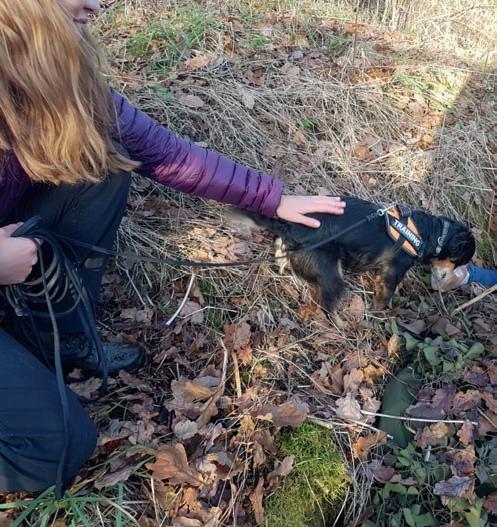
“You can work up to finding genuinely missing dogs or people, but for me it’s a fun activity for me and my dog, Rico. Another person and their dog are the ‘runner’; they pretend to be missing. They hide somewhere, for example in the town centre. My dog will sniff something that smells of the dog — his bedding or some of his fur (what we call a scent article) — then he follows their trail, and leads me to the ‘missing’ dog.
“You can start pet trailing at home; it’s basically the beginning of scent work. To begin with, take a smelly treat and put it somewhere visible, so it’s not hidden. Then make it harder and harder, around the lounge, behind the curtain, on the sofa, and let the dog sniff it out.
“My partner will go and hide behind the curtains or behind a door, and I’ll say: ‘Go find your daddy!’ The dog sniffs him out and my partner plays with Rico when he finds him, so they have a great time.
“Some dogs sniff the scent off the ground, some of them air “Spanielsscent. tend to put their noses properly to the ground, like in a cartoon, whereas my dog just looks like he’s walking around.”
Ring the bell
Fiona Whelan, behaviour specialist at The Company of Animals.

“This is a simple trick you can teach any dog, from a puppy right through to an elderly pet, and then you can expand and extend it to do all sorts of things.

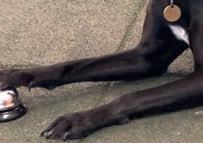
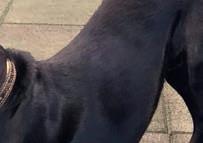



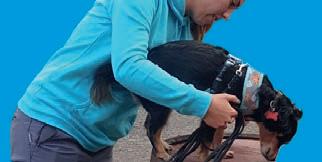

“Teach your dog a paw touch — click or use ‘Yes!’ and reward him for looking at, then moving towards, then putting his paw on your hand, or another specific item.
“I teach my dogs to touch a coaster, then extend the exercise by putting the coaster somewhere so the dog has to ‘send away’, touch the coaster, then race back to get the treat. You can make it a very active behaviour, dependent on your dog’s ability, fitness, and mobility.
“I then extend the game to the dog putting their paw on a bell. I place the bell in different places around the house. I can be sitting in another room, or I can be downstairs, and I can place the bell at the top of the stairs and the dog has to race up and hit it. I hear it, mark it with a ‘Yes!’, and the dog has to come running back to me and get a reward. You can sit and drink a glass of wine while you’re really working your dog’s brain, and giving him physical activity!
“You can intermittently move the bell. If you’ve got super-smart dogs, you can move it around and not let them see, so they’ve got to go and find it.
“I teach all dogs this behaviour. I use it if dogs are

Disc dog
“The fantastic thing about disc dog (dog Frisbee) is that it’s so accessible — literally any healthy dog can do it. You can adapt it for any dog breed or age — within reason — and for different sizes and body conformations. Some people love doing freestyle, but don’t do vaults (where the dog uses the handler’s body to get the disc) because conformationally their dogs aren’t built for it, but there’s a lot of really cool flat work you can do, and different throws that look really impressive.

“We have three games at the moment:
● Free disc — our answer to freestyle Frisbee; routines showcasing the creativity of partnerships.

● Jump disc — Throw disc mixed with a flowing, simple agility sequence, and aspects of distance handling.

● Throw disc — get as many points as you can in the allotted time; the further you throw the more generous the points!“Our main focus is the dogs having fun — as well as making it as safe as possible.
“We believe we’re one of the only organisations in the UK that makes reasonable adjustments for dogs with additional needs. Whether they are dog reactive, noise sensitive, or easily distracted, people can state on their entry form their current issues, and we’ll do everything within our power to make sure that they and their dogs can have fun at competitions. We allow treats and toys, because at the end of the day your dog should be having fun, and if they’re not — what’s the point? They find
TOP TIPS!
● Always follow safety advice.
● Find a reward-based trainer.
● Be guided by what your dog enjoys.
nervous, and they don’t like going in a crate, or they don’t like going in the back of the car. Once I’ve got them touching the bell, I gradually move it towards the crate or towards the boot of the car. Eventually, the dog will go in, touch the bell, and then come back, and you take their mind off the fact that they’re going into the scary place.”
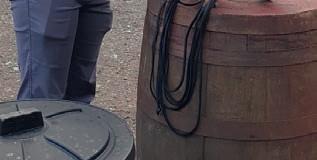
Frisbees inherently reinforcing.
“We start doing very low-impact foundation level when they’re young, just basic bite work and impulse control. Then we go on and develop some body awareness and distance control.
“It’s a new sport, and I feel we have a responsibility to introduce people to it in the most responsible and safe way, to set up everyone — dog and human — for success and a positive experience.
“We have an online group — UK Disc Dog Association — where people can check out their nearest UK Disc Dog Association instructor.”

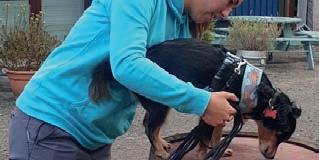
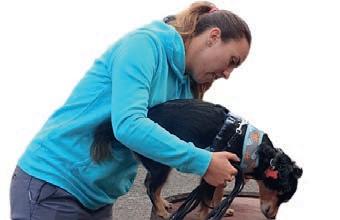


● Adapt activities to make them easier or more challenging.
● See all training as fun — your dog picks up on your attitude.
● All dogs, including the elderly, young, or those with disabilities, like to have fun.
John ‘Fitz’ Fitzpatrick, head trainer at Cosford Dog Training.
Fitz knows that having fun with your dog is important for your relationship.
Charlotte Bullivant of Cosford Dog Training swimming with her dog, Lily.
Rico sniffs out a ‘missing’ person.
Rachel has found that pet trailing helps Rico to associate other dogs with positive things
Fiona’s dog, Doyle, has learned to ring a bell.
Ruby Welsford, founder of the UK Disc Dog Association and trainer at Ruby, Betsy and Milo Too.
Ruby and Betsy in training.
Welsford.RubyImage:
www.petproductmarketing.co.uk October 2022 17
UK.PettrailerImages:
The HARDEST decision
Scientific advances are enabling our feline companions to live longer than ever. Indeed, the average life expectancy for owned cats living in the UK is now between 9 —17 years.
Unfortunately, with the benefits gained from making it to an old age come the costs of being much more susceptible to various chronic diseases. As cats cannot self-report and are very good at hiding health issues, this means that most often, we are simply going off our own judgements as to whether our cats may be in need of veterinary attention. Sometimes these judgements also involve making end of life decisions for our cats, which, speaking from personal experience, can be an excruciatingly difficult thing to do.
Knowing when it’s the right time to let our cats go can seem almost impossible. However, we shouldn’t have to make these sorts of decisions alone and this is where good support from veterinary professionals can potentially make all the difference. Additionally, learning more about the experiences of other owners who have been through something similar might help us to feel that we are less alone at such a difficult time.
Here, we are focusing on a study that sought to better understand owners’ perspectives when making end of life decisions for their cats and the role their veterinarians play during this process.
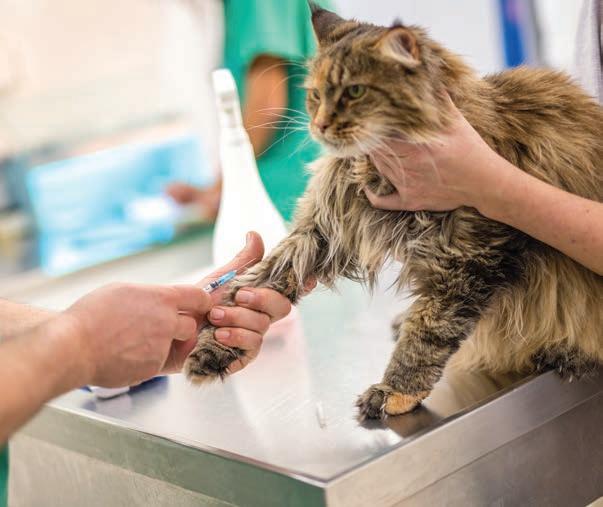

Who conducted the study? was it published?
What did the study involve?
The researchers used a qualitative approach in order to undertake an investigation of the perspectives of cat owners who had recently made an end of life decision for their cat. In this regard, a qualitative approach refers to their methods of data collection. Rather than ask cat owners to complete a survey with a specifi c set of pre-determined questions and tick box answers, the researchers spoke directly to cat owners during a series of face-to-face interviews, using open-ended questions. This approach was anticipated to provide a richer, more indepth understanding of the complex factors that surround owners’ experiences, which they could talk out in their own words.



A total of 14 adult New Zealand cat owners who had had their cat put to sleep within the last three months were interviewed. This specifi c number was considered suffi cient based on the notion of ‘theme saturation’. This means that the interview of the 14th person yielded no new information that hadn’t already been discussed by the previous participants.




The interviews were described as having a semistructured, conversational, and relaxed format. This approach is generally considered the best way to gain quality insight into peoples’ perspectives on a topic, as they may be more likely to open up and share when they feel relaxed and able to speak freely. During the interviews, the researchers used a series of open-ended questions to guide peoples’ responses.
Transcripts of the interviews were analysed using a special software program called NVivo. This program searches through the data and automatically identifi es a series of important themes that emerge. As these themes are directly derived from the words and phrases that people used during their interviews, they are considered to refl ect the key aspects of end of life decision making for cats, from the owners’ perspective.
What were the main findings of the study?
The study identified two main overarching themes within owners’ responses.

The fi rst theme related to ‘animal centred’ concerns that were focused on changes in the cats’ behaviour and the impacts of pain and ageing. Owners also mentioned how other people could more clearly see the cat’s condition than they could. They talked about changes in their cat’s eating habits, such as going off their food, as well as weight loss and a reduction in activity. Some owners also mentioned their cat starting to house soil and being less keen to interact with them.

The study highlighted that PTS decisions were generally made shortly after the point where ill cats started going off their favourite foods. In contrast, a lack of obvious behaviour changes, even in otherwise chronically ill cats, were perceived to indicate that the cat was faring well.In relation to pain, the study reported that owners struggled to identify that their cats were in pain and that when cats went on to pain relief, this was usually at the recommendation of the vet, rather than instigated by the owner. One owner commented regretfully that if they had known that their cat was in pain, they would have “done something a lot sooner.”
In relation to ageing, the study also highlighted that owners struggled to distinguish between normal ageing and a deterioration in the cats’ health or qualify of life that might warrant the need for euthanasia. For example, cats slowing down, losing weight, and body condition were often described as just ‘getting old quickly’, rather than having symptoms of underlying poor health. Finally, owners also discussed fi nding it hard to detect changes in their cat if the cat’s condition deteriorated slowly, and emphasised the importance of gaining
Making end of life decisions: Dr Lauren Finka delves into a study about owners’ experiences of deciding to put their cats to sleep.
Dr Lauren Finka and in the cat. She has a in cat for
Euthanasia is usually carried out with an injection of anaesthetic.
www.petproductmarketing.co.uk Cat care October 202218
the perspective
When
The study was carried out by a cross-disciplinary team of researchers in the fields of psychology, animal welfare, and bioethics, all based at Massey University in New Zealand. Their paper was published in April 2021 in the journal ‘Animals’ in an open access format, meaning the paper is free for anyone to read.
Behaviour
welfare scientist specialising
domestic
PhD
behaviour and currently works
Cats Protection.
of others, especially people that hadn’t seen the cat for a while. Some owners described their cat’s worsening condition as just “creeping up on them.”
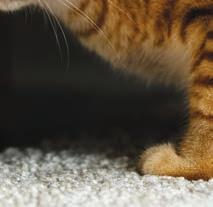
The second theme was related to ‘human centred’ concerns that included owners discussions with other people about their cat (such as vets, friends, and family) and also focused on the needs of the owner, their relationship with their cat, and the vet’s understanding of this.Owners also wanted to know what to expect from their cat’s prognosis and to be better able to predict the related time frames and outcomes. This theme outlined how most owners appeared to be very dedicated to their cat, felt a deep connection to them, and wanted to put their cat’s needs fi rst.
For one owner, the positive view they had of their vet was due to the vet understanding that the owner’s cats were her ‘children’ and of great value to her. Owners also talked about the diffi culties they faced when other people in their lives couldn’t understand the special relationship they had with their cat. This was particularly challenging when it came to needing support from friends and family members following the loss of their cat because owners were left feeling that they couldn’t reach out as others wouldn’t understand their grief. Some of the owners interviewed were also dealing with chronic illness themselves and reported becoming very attached to their cat while recuperating at home and coming to rely on their cat for company.
In relation to owner’s perspectives of death, the study reported that most people thought that this was a normal process and that euthanasia was a way to end their cat’s suffering. However, the majority of owners discussed their diffi culties in facing their cat’s death and didn’t want to ‘give up’ on their cat in case they were left wondering ‘what if’ (the cat recovered). Owners found it particularly hard to make end of life decisions where their cat’s prognosis was unclear and opted to wait until they were better able to make the decision, meaning it was clearer that the cat was suffering or wouldn’t recover.



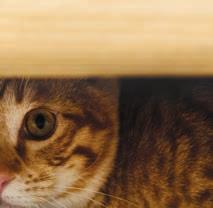
Owners also mentioned the importance of continuity of care (i.e. seeing the same vet each time for their cat’s treatment) and that good vets were those that were empathic and seemed competent and genuinely caring and understanding. Owners also described not being happy with their vet if they seemed inexperienced or their values and opinions about euthanasia didn’t align to their own. On the other hand, owners greatly valued their vets’ opinions about their cats’ prognosis and that the vet could provide reassurance that the owners’ had made the right decision. This validation from the vet was considered to help the owners with the grieving process.
Finally, owners also talked about the uncertainty and the not knowing how long their cat had left, what the outcome would be, and what their cat would go through towards the end of their life. This uncertainty led owners to pose these questions to their vets and also search online for answers. Owners also reported appreciating their vet being honest with them and indicating what they would do if it was their cat.
THESE QUESTIONS COVERED THE FOLLOWING TOPICS:

● The owners’ perspectives on cat longevity and any previous experiences of having to decide to put a cat to sleep (PTS).
● Their recent cats’ background, what was wrong with them, and when the owners first considered PTS for their cat.
● The factors that contributed to making the PTS decision.
● The role the vet played in the owner’s PTS decision making, including the options the owner was given and how important they considered the vet’s advice to be during decision making.
● Any other individuals the owners sought advice from or spoke to about their decision making and how people responded.
● How owners assessed their cat’s welfare or quality of life leading up to the PTS decision and their experiences of the day that their cat was euthanised.

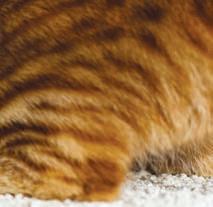


● The owner’s expectations of their vet, the vet’s skills in performing euthanasia, and their general experience of end of life management of animals.
Why is this research useful?


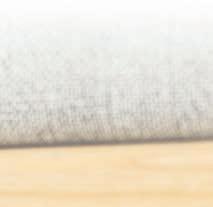
This research helps to shed some light on the concerns and experiences of cat owners regarding the making of end of life decisions. I’m sure many of you were able to relate to a lot of the sentiments shared by the owners in this study, which should hopefully provide a little comfort during difficult times.


For me, the take home messages are that we need to be more aware of the potential for our cats to be in pain, unwell, or suffering, even when there may not be any obvious signs. In this regard, the opinions of our vet, in addition to those of friends and family (that see our cats infrequently), might be invaluable. Such individuals may be better able to detect an underlying issue concerning our cat’s health or highlight when our cat’s quality of life is compromised.Therelationship we have with our vet is very important and ideally, we should be able to find a kind and compassionate vet that will be able to treat our cat all the way through until the end. Additionally, many of us probably want our vets to give us ‘permission’ to consider ending our cat’s life, or at least reassure us that we are making the right call.
WHERE CAN I GET HELP IN DEALING WITH THE LOSS OF MY CAT?
It’s important not to underestimate the amount of grief that can be experienced when dealing with the loss of a pet. There is a range of organisations that can provide various sources of support:

Animal Samaritans Pet Bereavement Service: 0203 745 www.animalsamaritans.org.uk9859
Association of Private Pet Cemeteries and Crematoria: 01252 www.appcc.org.uk844478







Cats Protection Paws To Listen and Grief Support: 0800 024 www.cats.org.uk/grief9494
EASE Pet Loss Support Services: www.ease-animals.org.uk
Blue Cross Pet Bereavement Support Service: 0800 096 www.bluecross.org.uk/pet-bereavement-and-pet-loss6606
Top Tip!
When a pet is put to sleep, it is your decision whether to stay with them — do what feels right for you.
Personally, if I had a cat that had a condition with a poor prognosis, I would always want my vet to be comfortable with putting the PTS option on the table at the very beginning and to be comfortable discussing this process with me. I would also want them to be honest about how much my cat might suffer as their condition progressed and how long they might have left. This approach would help me to be able to start processing PTS as an outcome, enabling me to emotionally prepare myself (hopefully) a long time in advance of it becoming a reality. With this sort of vet, I would also feel much more comfortable asking about how and where the euthanasia would take place, so I could ensure that this could be made as gentle and least stressful for my cat as Whatpossible.was interesting was that many owners also talked about not feeling that their friends or family understood the importance of their relationship with their cat, making it difficult for grieving owners to reach out for support when necessary. I can certainly relate to this experience and remember that it helped finding cat-loving people to talk to that had gone through a similar process.
 Behavioural changes and withdrawing from their usual routine is a common sign of health problems in cats that owners pick up on.
Our own feelings for our cats will impact our decision to put a cat to sleep.
Behavioural changes and withdrawing from their usual routine is a common sign of health problems in cats that owners pick up on.
Our own feelings for our cats will impact our decision to put a cat to sleep.
October 2022 19www.petproductmarketing.co.uk
A beginner’s guide to hamsters


Claire Hamblion Marketing Director at Supreme Pet Foods




With their lively personalities and appealing looks, the popularity of hamsters has never been greater. In fact, according to the Pet Food Manufacturers’ Association (PFMA) Pet Population Statistics there are 600,000 of these cute creatures in the UK, sitting just behind rabbits and guinea pigs in the small pet popularity stakes. So how can specialist retailers make sure that they are just as popular with hamster owners?
Hamsters are often thought of as ‘starter pets’, ideal for those who are new to the world of pet ownership. However, knowing where to begin when it comes to hamster musthaves can be daunting for inexperienced owners. Offering expert, trusted advice right from the start can convert new owners into loyal customers who visit your store for all their future pet care needs time and again.
Hamster habitats
The biggest purchase that new owners will need to make and one of the most important to get right is a suitable home for their new four-legged friend. A common mistake that many owners make is to under-estimate the amount of space these pocket-sized pets require. Although they may be small, in the wild hamsters are surprisingly active, travelling vast distances each night in search of food. The Blue Cross recommends that the cage should be at least 60 x 30 x 30cm for dwarf hamsters and 80 x 50 x 50cm for Syrian hamsters, but this is just the minimum and bigger is almost always better. With continued trends towards premiumisation, owners are often willing to invest in a little luxury for their pets so stocking a selection of cages to satisfy all budgets is advisable, helping to ensure happy customers as well as happy hamsters.
Type of cage needs to be considered in addition to dimensions. Well ventilated and easy to clean, wire cages with a plastic base are a popular and practical choice. Remember to make sure that the base is deep enough for a thick layer of bedding to allow hamsters to express their natural burrowing instinct. With plastic modular cages and tanks up for consideration too, there are pros and cons for each, and retailers can help guide new owners towards the right choice.
Make a house a home..
Once the all-important living quarters have been chosen, the next step is a few home comforts and top of the list is suitable bedding. As hamsters are natural burrowers, a deep layer of bedding that they can make sturdy tunnels with is essential. Tiny Friends Farm Eco Bedding meets these needs perfectly and is also highly absorbent, virtually dustfree, and soft on tiny paws.
Their new pet may be their priority, but today’s consumers also place an emphasis on the environmental impact of their purchases, seeking out products with strong green credentials. Made from surplus paper that would otherwise go into landfill, Eco Bedding is compostable and with fully recyclable packaging, it is a sustainable choice from start to finish.
Dietary decisions

should make sure that they are a suitable size. As a general rule, hamsters should not have to arch their back to run in a wheel. This means that Syrian hamsters may need a wheel diameter of 20-30cm, while 15cm may be big enough for a dwarf breed.


It is worth bearing in mind that as the cost-of-living crisis affects us all, many customers are on a tighter budget at the moment. Advising them on DIY environmental enrichment is a good way to build trust as a caring helpful retailer; something as simple as a cardboard tube helps hamsters follow their natural instincts. Why stop at cardboard tubes though….have you heard of hamsterscaping? This growing trend started in mainland Europe but is beginning to catch on in the UK. So, what is a ‘hamsterscape’ and how do owners go about creating one? The hamsterscaping ethos centres around creating an environment for hamsters to live in that allows these small pets to express their natural behaviour and live their best hamster life. So, sand baths, hiding places, suitably sized wheels, deep bedding should all be part of a hamsterscape, with an emphasis on natural materials where possible. Giving some thought to providing an environment that mirrors a wild hamster habitat improves hamster well-being, making for happy, active pets and a reduction in bar chewing, biting, and other unwanted behaviours.
Sand baths
A nugget gnashers…on
Sand baths have traditionally been associated with other small pets like chinchillas and degus, but there has been a huge increase in the popularity of bathing sand for hamsters. However, many owners, especially those that are new to hamster ownership, are unaware of the benefits. First and foremost, hamsters enjoy a sand bath. It can be a great treat offered several times a week, helping to provide enrichment and improve well-being. Sand baths can also do wonders for coat condition, removing excess oils from the coat and keeping fur clean and shiny.Stock high-quality products such as Tiny Friends Farm Harry Charlie and Gerri Bathing Sand and Science Selective Bathing Sand and why not incorporate them in a new hamster in-store display to start the sand bath conversation.
Another big question for new owners is diet. Hamsters are omnivores, eating a variety of foods in the wild, including seeds, leaves, and roots, as well as some insects. Their nutritional needs differ from other small omnivores though, with hamsters requiring more protein than gerbils for example. This means it’s best to feed them a species-specific food tailored to their particular needs.

From mixes to single component, there can be a bewildering choice of options and new owners will often look for guidance from retailers. Supreme’s single component extruded nugget Science Selective Hamster Food is a nutritionally complete diet that is highly palatable with no added sugar and comes recommended by vets. Although it is suitable for all hamsters, from Syrians to dwarf, owners appreciate choice so retailers should stock diets to suit all tastes and budgets.
So, what about muesli-mixes? Muesli-mixes are diets containing many components such as flaked maize, peas, grains, or seeds. Muesli can provide a variety of food types which adds interest and enjoyment and the opportunity to forage. The range of textures, sizes and shapes also offers a variety of chewing experiences. All Supreme’s Tiny Friends Farm diets, including Harry Hamster Tasty Mix and recently launched Harry Hamster Fruity Nutty Mix, are packed full of delicious natural ingredients. With an estimated 60 percent market share and 10 percent year-on-year growth, Harry Hamster continues to be popular with owners and their pets.
Adding the fun factor
Looking after hamster well-being is not just about their physical health. Providing enrichment will help to keep their busy minds and lively personalities happy too, as well as helping increase basket spend.
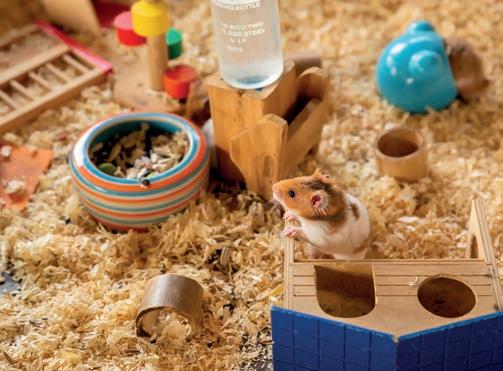
Adding tunnels provides interest and encourages hamsters to follow their natural instincts, as well as increasing exercise space. Hamster wheels are another popular way of keeping these small pets busy, but retailers

Hamstersissues.
Temperament, taming, and treats
As a prey species, hamsters are easy to startle which means that without careful consideration of their needs, the settling-in period can be stressful for these small pets. While they generally have a good temperament, they can be inclined to bite if startled, so getting them used to being handled and building that all-important bond between pet and owner, needs to be taken slowly and this should be highlighted to all new owners. With this in mind, speciesspecific treats can be carefully hand-fed to build up contact and trust between hamster and owner.
Treats can also be hidden round the enclosure to encourage natural foraging and keep new hamsters busy and happy. From Harry Hamster Yippees Treats to Tiny Friends Farm Stickles and Selective Naturals Harvest Loops, stocking a selection of tempting snacks will ensure all tastes and budgets are catered for.
POS material
Don’t underestimate the value of these popular pets in building strong client relationships and long-term loyalty. Supreme offers a comprehensive range of POS material to support retailers in forming these bonds. Ranging from traditional barkers and wobblers to care guides, free samples, and loyalty cards, Supreme’s POS material can prove highly effective in boosting sales and encouraging repeat custom, especially when incorporated into attentiongrabbing in-store displays.
Hamsters love to burrow.
Hamsters need a cage that gives them the space they need.
Hamsters have incisors that grow continuously so having plenty to gnaw on, will help keep hamster teeth in tip-top condition. One lesserknown nugget of information is that hamster teeth are naturally yellow. In fact, having pearly-whites can be a sign of health
need enrichment.
20 www.petproductmarketing.co.ukOctober 2022 Small companions
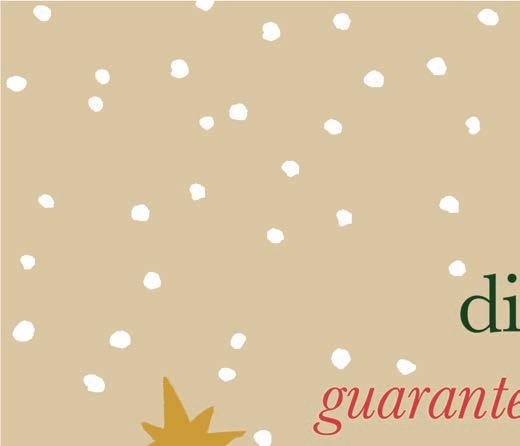

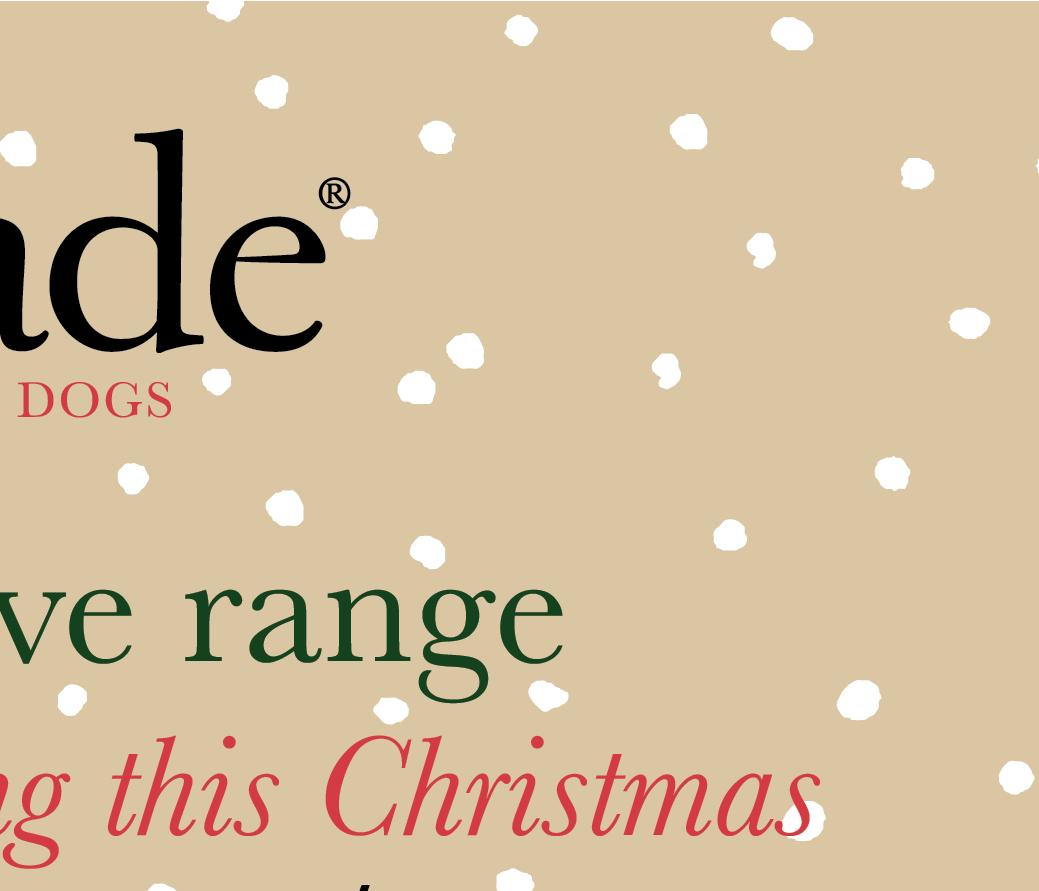

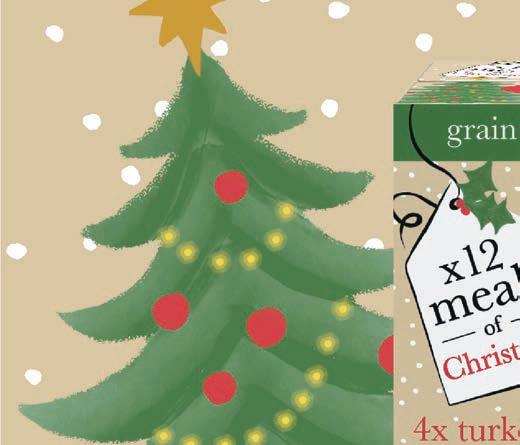
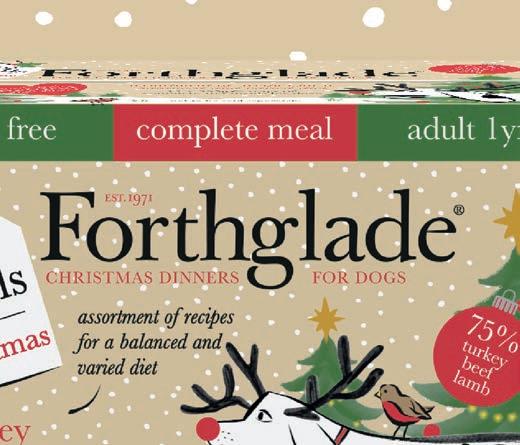

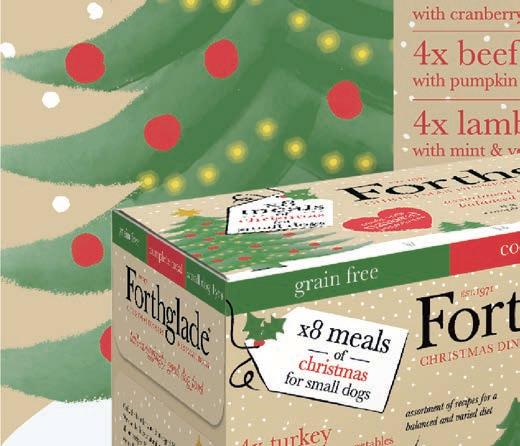

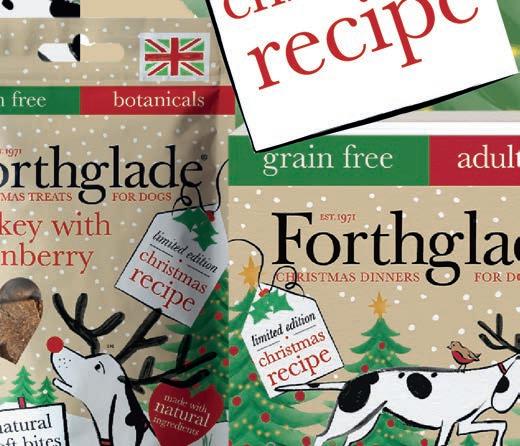




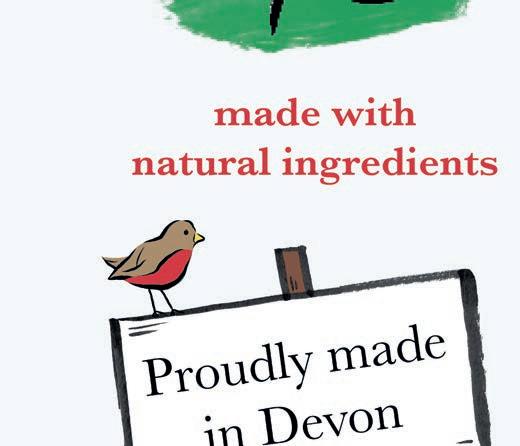



ethicallygrowingFightingfatandsales



As we learn more and more about reptile biology and the changes to biological function within captive species, we are starting to uncover health issues in certain species that are linked to the type of care and the diets that have been provided historically. So, what is the best way to keep pet reptiles and how do we work as thoughtful keepers to stave off avoidable diseases such as those caused by obesity?
Reptiles are truly opportunistic in every aspect of their function. They have developed to be cold blooded which reduces their requirement for food to provide heat for the body and as such are powered in a linear fashion to the energy from light that surrounds them. This is applicable to the energy provided by the sun and from replicant sources, such as UV and heat lamps.
When I say linear, what do I mean? Well, if we under provide infra-red as heat or provide wavelengths of IR such as IR-C, which have a low bioavailability, then we under provide for the animal. This reduces the amount of energy available for it to function. This means of course that both physical exertion is reduced as is the ability for the vital organs to function in a linear or matched way. If we over provide, outside the tolerances of the wild development, we risk overheating and burn, both of which can prove fatal if access to shade is not provided. As we have seen over the past few issues, it is providing the balance of the wild per species and per enclosure type that holds the key to effective ethical care.
In the wild, reptiles have access to a huge space and countless differences in energy due to the ability to move, climb, burrow, and in cases, even swim off to a new area should energy, food, disease, habitat change require such.
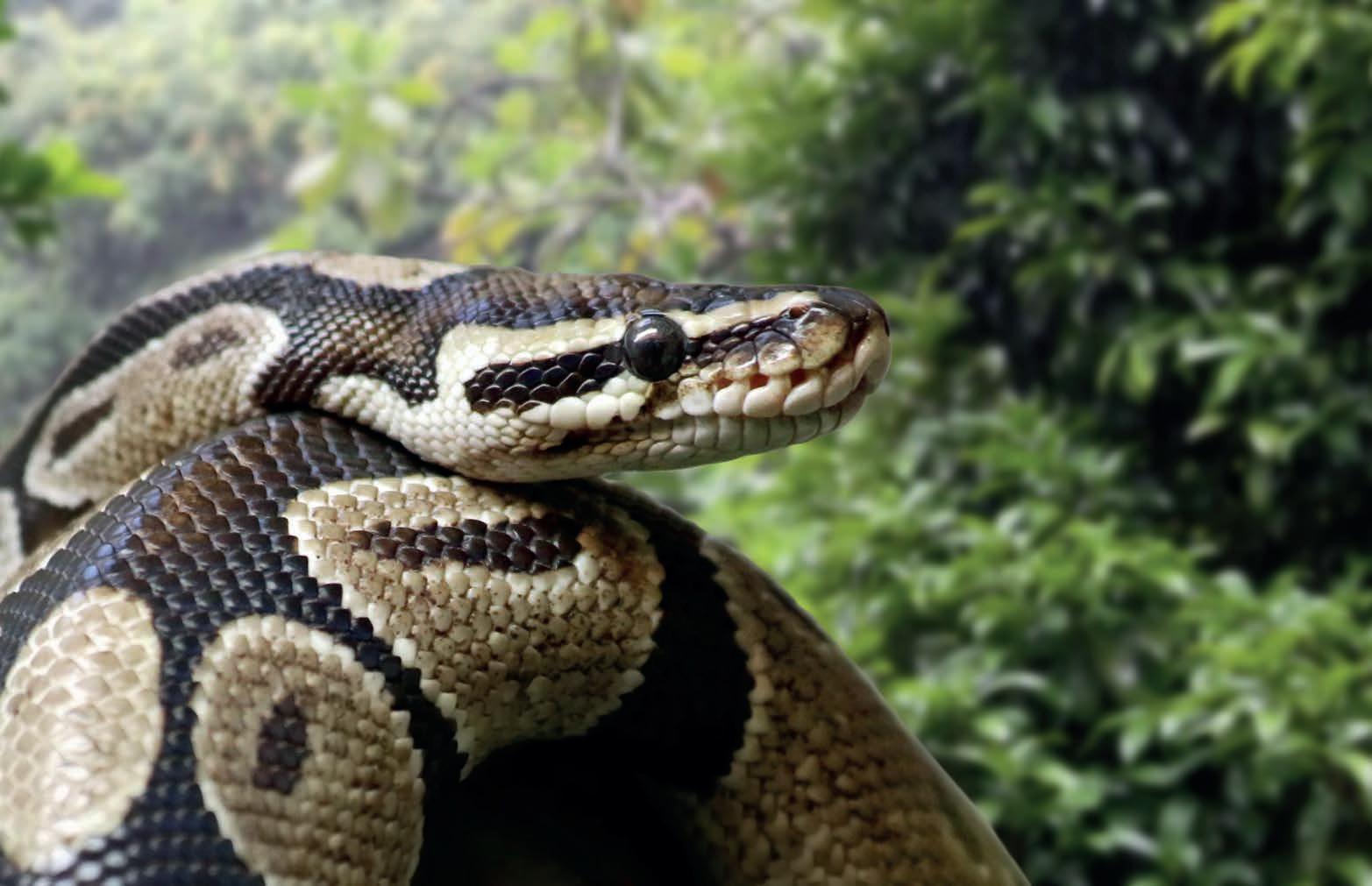
Another area that reptiles and amphibians are wholly opportunistic is food and feeding.

As a highly adapted and adaptable group of species, built to both survive and reproduce, reptiles have learned in most cases to never pass a meal opportunity up. This is why the majority of species have wide feeding parameters, taking animal and or plant species as opportunity presents. This does mean that reptiles will consume foods from wide food groups and as often as they can. Why is this? Well, put simply and for most species, they never really know where the next meal will come from, therefore it makes sense to take food as it presents, whenever you can, even if you are ‘full’. (I do not believe that reptiles have a sense of being
full). In this way in the wild, they build the reserves over the seasons of plenty that will sustain them in the seasons of lack. This can become an issue for captives where roaming space is reduced and food is somewhat plentiful.


Sadly, the older ways of keeping reptiles did not really provide them with much opportunity to find physical enrichment. Most of us can remember the dark days of sterile keeping which made this issue even worse. Reptiles are built to be able to move and in doing so this movement reduces excess fats, tones the body, and keeps organ function optimal. If we remove the ability to climb, move, run, and clamber, we reduce the animal’s ability to deal with excess foods and the fats that are common to a species that is, or is forced to be, sedentary. Small caging, poorly designed caging, lack of physical energy, and lack of physical enrichment all increase the chance of captive obesity.
We then add in the fact that food for captives is somewhat plentiful and that there is a lack of good advice as to how and when to feed a species at certain life stages or seasons. As keepers, we tend to kill with kindness, being obsessed that our charges should feed daily just like our families, dogs, cats, rodents, when in reality reptiles on the whole require less food and at less frequency.
As modern keepers, now educated as to the pertinence of our light sources and the requirement for wild-like care, we should start to look at what we feed and how often, taking notes of body score and adjusting through the seasons to provide in a wild-like way and away from the chances of unnatural weight gain. Excess weight for reptiles increases fats around the body, around and in the organs and the blood. From a vet point of view and after consulting specialist exotic vets, it has become clear to me that fatty liver disease is becoming the new most often seen condition rather than MBD (in a sense, thank God as this means that our joint efforts are starting to eradicate this group of wholly avoidable diseases).
We can lower the chances of avoidable obesity by building bigger and better cages, designed to allow the animal the freedom of natural movement. We should all now be using live planting and natural woods and stone decoration. All of this will encourage the animal to move and as it does, increase its physical and mental well-being. We should, however, start to look at what we are feeding and the frequency of such.
For live insect eaters, we are lucky in the UK to have
access to a wealth of feeder insects for a relatively low price. I have always suggested that healthy grown animals have at least two rest days a week where they are not fed (this does not apply to young growing animals nor those with medical need or treatment). In this way, we practically reduce the frequency of food which lowers the chances of obesity and we allow the body to make best use of the foods offered on feeding days.
We can also change through the species of insect offered and the size or ‘instar’ of feeder. Rather than feeding a grown Bearded Dragon x-large hoppers at every feed, why not offer medium hoppers on rotation? Why not increase enrichment by using much smaller locusts or crickets in numbers so as to allow the animal to actually run around chasing the food source, rather than waiting for super-sized and slowmoving bugs to amble past. Let’s fire up their brains and help exercise the body at the same time. For many, flying livefoods will inspire the brain and cause a welcome chase. Calciworms hatched into flies can do this well and are nutritionally positive.
For snakes, I suggested in my second book on reptile nutrition that rather than just offering jumbo and x-large mice and rats all of the time, that we instigate nest raiding by offering a collection of smaller animals. This changes the nutritional profile for the snake to make use of and can stimulate the brain. Indeed, if we are honest, snakes have the highest reported incidence of obesity, from what I am told. This is mainly due to the habit of using small unnaturally decorated cages or even worst racks, and feeding large food sources weekly. I have an adult Royal Python that is now nearly 15 years old. She has mostly always been a good feeder luckily, but I have reduced over time the number of prey items and the frequency of feeding, especially during the winter months. I tend to feed every 2 — 3 weeks in the summer and 3 — 4 weeks in the winter. My snake has an almost perfect body score in relation to those weights and sizes reported as wild in Ghana.
As professionals and business owners, any increase in welfare can also relate to an increase in ethical sales — bigger and better vivs, better lighting, natural decoration and plants, and a greater requirement for differing livefoods. One box of x-large hoppers could be replaced by two boxes of mediums and in doing so you see a welcome extra pot sold, but also can be relatively sure that this is better, in rotation for the animal as it will have to work for its meals.
John Courteney-Smith MRSB FLS Arcadia Reptile; Head of Science and Innovation/Author/Herpetologist
Think carefully about how you feed your reptile.
22 October 2022
Reptile care
www.petproductmarketing.co.uk








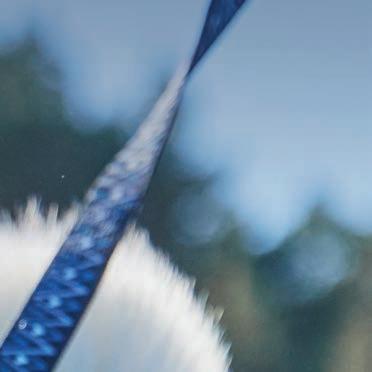

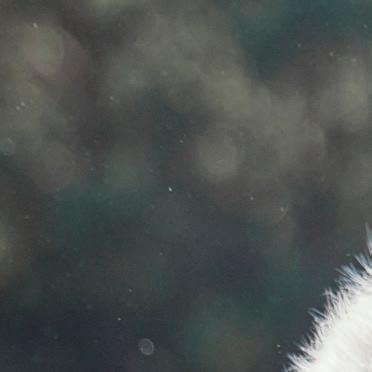


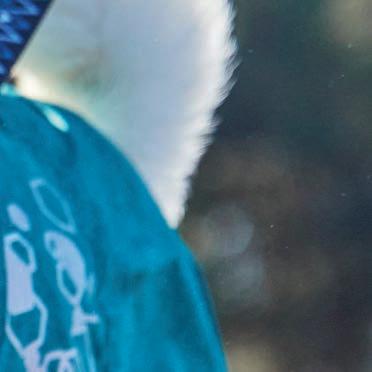

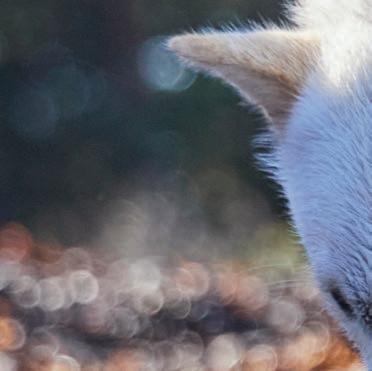




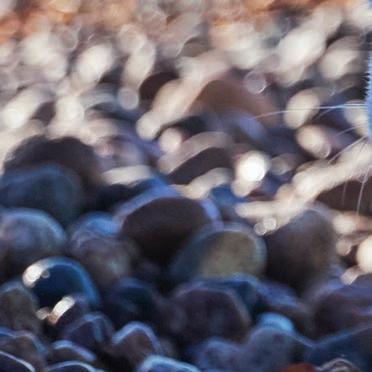
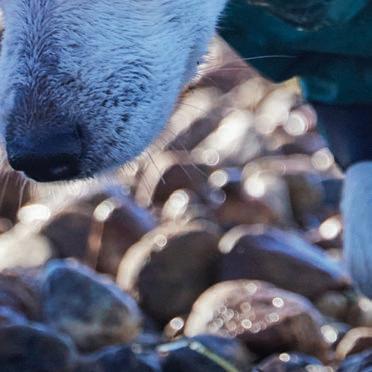
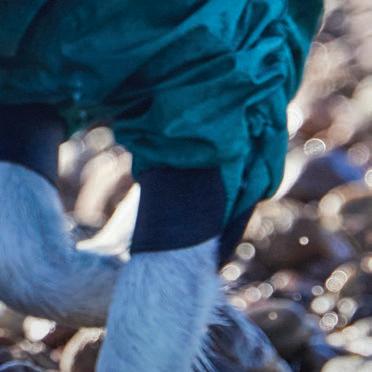
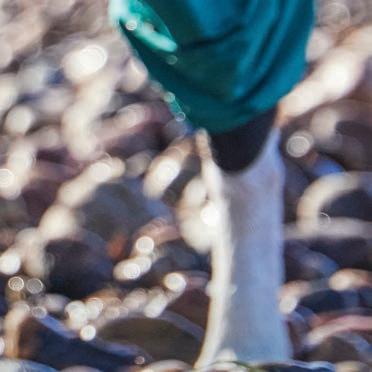




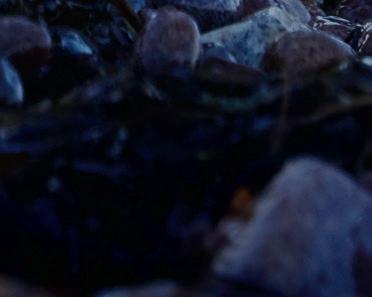


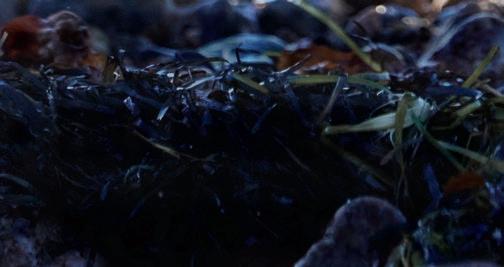

Exclusive to • MODERN SCANDINAVIAN DESIGNS • FULL RANGE OF CLOTHING & APPAREL • NEW UPGRADED LEASHES 0115 982 3900sales@petproducts.co.uk petproducts.co.uk AUTUMN & WINTER RANGE OVER 40NEW LINES
indelicateThematterofpay
Employers and employees are under the cosh from rising costs. And given the inflationary pressures all are experiencing, pay is a subject that isn’t going away any time soon.
But how a request for a pay rise is received by an employer depends on where they are at in their usual pay review cycle, the industry in which they operate, and the extent of the competition.
Most employees expect an annual pay increase at least in-line with inflation which is currently running at its highest rate in 40 years. It’s entirely understandable that employers can’t afford to offer 9 or 10 per cent pay increases at the moment, particularly given that employers face national insurance contributions on top.
Many employees are seeing in the region of 4 — 5 percent awarded which is well below the current rate of inflation. This means that employees are earning less, so employers need to be inventive about what they can offer to staff that eases the strain on income but costs them less too. There are some really novel ideas that tick other boxes as well, such as corporate discounts on energy-saving devices, electric cars, and solar panels for home offices.
Setting pay
As to how pay is set depends on the business. In unionised industries, pay is negotiated between the employer and the union, and this is why we are suddenly seeing a return to strike action when these negotiations are not successful.
In non-unionised businesses, pay is rarely negotiated with employees and is usually determined by the managing director or CEO in smaller businesses, and by remuneration committees in larger businesses and plcs. These committees have the job of benchmarking pay both externally,
in the market; and internally, between staff operating at the same levels.

Should employers link pay rises to productivity?
Linking pay rises to productivity is already used in some sectors, whether that be piecework or team or company performance. However, at the moment, even when businesses are outperforming their previous results, it may still be difficult to give substantial pay rises, given that recession is likely to be looming.

Salary sacrifice is one idea that can present real advantages for all by offering a tax and National Insurance efficient way of purchasing items such as bikes and cars and making pension contributions. This can definitely be a better option for employers than a pure pay increase, but it’s not suitable for all employers. Employers have to think about what happens if an employee leaves part-way through the repayment term, and salary sacrifice can’t reduce pay to below national minimum wage levels.
Industrial action


Strikes and ‘work to rule’ can cause severe disruption to business operations and have a knock-on effect on supply chains; for example, where production is slowed or deliveries can’t be accepted, an employer may breach the terms of its contracts with customers.Employee relations issues can also expose the business to negative publicity. Recent well-publicised examples of action taken by unions include the RMT successfully balloting for industrial action by rail workers.Ifcollective bargaining agreements are in place, employers should make sure they are followed and fully exhausted in order to try to avoid industrial action. However, even with the best will in the world, it may
not be possible to avoid industrial action altogether. How such action should be handled depends on whether the action is lawful (authorised and endorsed by a union) or unlawful (where employees take matters into their own hands). Where action is unlawful, options can include obtaining court orders to prevent an unlawful strike and considering whether disciplinary action against participating employees, including possible dismissal, is appropriate. It’s also important for employers, if industrial action is threatened, to consider contingency planning — the business may need to redeploy non-striking employees from other parts of the business based in other locations to cover the work of striking employees.
If a non-unionised workforce seeks to become unionised, the employer might want to consider placating staff by agreeing to an informal request for voluntary recognition which might give the employer more scope to determine the remit of the union.
The ‘Big Quit’ effect

Some sectors are in the middle of one of the biggest talent wars for years, with employees jumping ship for more money. But the pandemic forced some to re-evaluate their working priorities; some want to work less or from home, others remain loyal to an employer who supported them through the pandemic. Regardless, employers need to balance their offering to employees.
Benefits such as flexitime, extra holiday entitlement or even unlimited annual leave, free breakfasts or lunches, and employee discounts can all go a long way to improving the employee experience without increasing salary overheads. Some employers are looking more at employee health and well-being with support for mental health, new parents and carers, and key issues for women in the workplace.
Working extra hours
Another option is for overtime, but unless it is expressly stated in a contract of employment, employees don’t have a right to overtime. Overtime is usually offered by an employer and, depending on the contract, the employee might be compelled to work it, or might be able to decline the offer. Overtime can be paid at enhanced rates, but this again depends on the contract. The only statutory requirement is that employees receive at least the national minimum wage on average for all hours worked or treated as worked. Overtime can be a good solution if employers have such work available.


In summary
The issue of pay is not going to be toppled off the news any time soon. For the moment at least, employees have the whip hand and can look for a job elsewhere with ease. This makes it imperative for employers to find creative ways of giving employees more without breaking the bank.
 Adam Bernstein Writer/researcher for independent businesses.
Adam Bernstein Writer/researcher for independent businesses.
October 202224 www.petproductmarketing.co.uk
Business advice
Tried, Tested And Trusted Walter Harrison's we've been creating the highest quality feeds in our Nottinghamshire mill for over 100 years. We source, clean and blend the finest to a range of Wild Bird food that we're







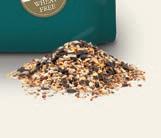

Only the best for Britain’s birds for over 100 years!







During the Winter season, the drop in temperature means there are less natural resources readily available for birds in the wild. To keep your customers’ wild garden birds chirpy and healthy during the colder months, it is important to provide lots of nutritious, high protein, high fat foods and treats to support birds’ energy levels.
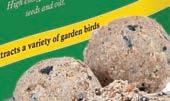
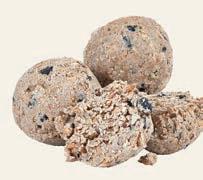
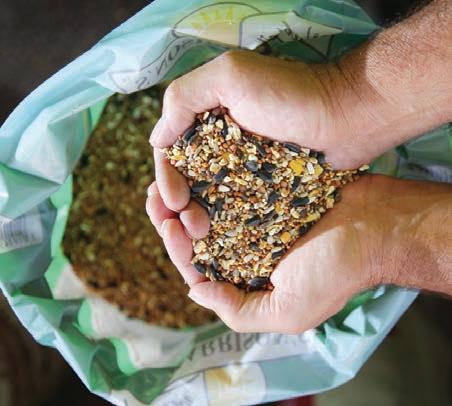


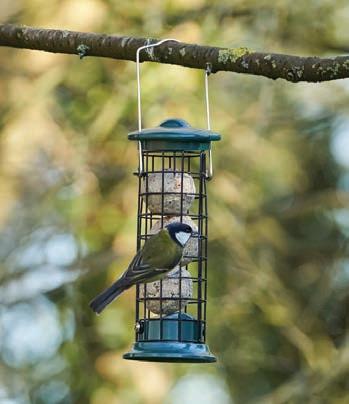



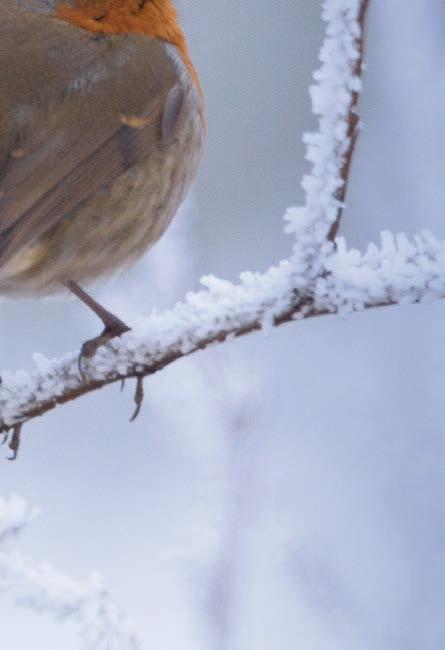

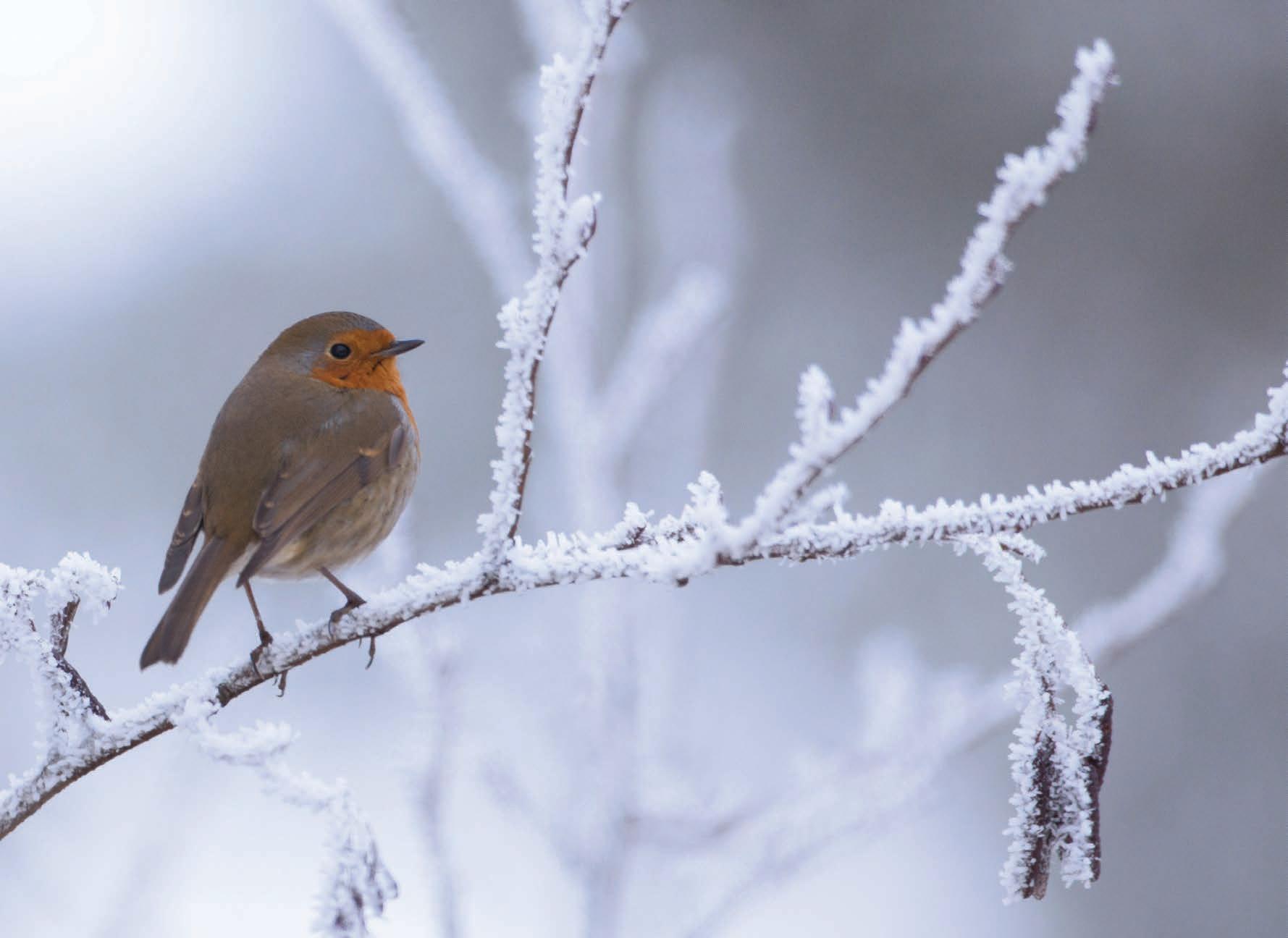
At Walter Harrison’s we offer a wide variety of high quality foods such as triple-cleaned seed mixes, premium fat balls, and suet in different shapes and sizes. A wild bird range would never be complete without a selection of feeders: Harrison’s can offer your customer durable die cast feeders, stylish hammertone feeders and easy-to-use fliptop feeders, in formats to suit all types of wild bird treats.
PUREST OF INGREDIENTSSELECTED OF BRITISH














Walter Harrison’s is an exclusive brand of Pedigree Wholesale. For more information on ranging the portfolio, and to explore our FSDU and POS options, please visit petproducts.co.uk , contact your local Pedigree Wholesale sales representative or email liz.green@petproducts.co.uk
At
ingredients
create
proud to put our name to.
Double or triple cleaned CAREFULLY
Only the finest ingredients BEST
Made in the UK Follow us and stay up to date with our @Walterharrisons_competitions!
&Q ACustomer solutions
Hamster health
What signs of ill health should I look out for in my hamster?
Woodgreen say:
Hamsters live on average for three years and are generally healthy animals. Often, most illnesses come with age. Make sure you find a vet who has chosen to specialise in small mammals to get the best possible care for your hamsters. Here are some signs to look out for:
Parasites and fur loss
Parasites, such as fur mites, can be fairly common in hamsters, particularly in Syrian hamsters. Incorrect bedding is one of the most common causes of this. However, in some cases, your hamster may be suffering from hormonal changes or tumours, which may cause hair loss that appears to be symmetrical.
Consult your vet if your hamster is showing any of these signs of a parasite infestation:
● Hair loss
● Red, irritated skin
● Severe dandruff
● Small scratches all over their body
● Visible lice or mites which look like orange or black dots within the fur
Wet tail
Wet tail is often brought on by stress, such as change in their surroundings or the presence of another animal in your hamster’s environment. A build-up of bacteria in the cage can also cause wet tail, so regular cleaning is very important. Symptoms of wet tail include:
● Watery diarrhoea
● Lethargy
● Loss of appetite & sudden weight loss
● A very strong smell of faeces
Wet tail can prove fatal within days and unfortunately doesn’t respond well to treatment. If you suspect your hamster has wet tail, take them to your vet as soon as possible.
My adolescent!exuberant
Tumours
Tumours are fairly common in an elderly hamster. They can grow very quickly because hamsters have a fast metabolic rate. Mammary tumours are the most common and are the most likely to be cancerous.
When you handle your hamster — and you should do this regularly — check for unusual lumps and bumps on their body. If you’re at all concerned, take your hamster to the vet.
Nails and old age
As your hamster gets older, their nails will start to grow rather rapidly. Placing items like fruit tree wood for them to climb on can help file their nails down. However, your vet will be able to trim their nails if you don’t feel
Whenconfident.your hamster reaches around two and a half years of age, you will start to notice a few common changes, including:
● Overgrown nails
● Hair loss, leaving sparse bald patches


● Sleeping more
● Drinking more
● Lumps and bumps
● Weight loss, but teeth remain in good condition
● Becoming wobbly when walking about. Always keep an eye on your hamster if they’re housed in a mesh cage.
Elderly hamsters can get caught in the bars if their nails have grown.
If you feel your hamsters are starting to struggle with one or more of these symptoms, talk to your vet. While they’re perfectly natural, you’ll want to make sure they’re comfortable and not in pain.
Dental health
Your hamster’s teeth will continually grow, so make sure
you provide them with a varied diet and plenty of things they can gnaw on, including safe fruit tree twigs. Occasionally, hamsters can suffer with overgrown incisors (the front teeth). This is more common in hamsters that have been bred poorly or have been involved in an accident where they may have fallen with an impact.

Hamsters who chew their cage bars regularly can also be at risk of dental damage so it is important to make every effort to discourage it. They easiest way is to provide a very spacious cage with lots of varied enrichment including tunnels, fruit tree twigs and toys to chew, suitably sized wheels and scatter feeding. Changing the environment regularly will also help to keep them interested.Regularly
check your hamster’s teeth to make sure they remain a good length. They should be a light yellow colour, although they can be white when they’re very young.
Woodgreen Pets Charity helps pets and people at every step of the way. As well as being a safe haven for vulnerable pets in need of urgent care and a loving new home, Woodgreen provides expert advice and hands-on support to petowners in need of a guiding hand. With almost 100 years’ experience in rehabilitating and rehoming pets, the charity is committed to making sure that pets have the best lives possible. This vital work is only possible thanks to the generosity of supporters. Find out how you can make a difference to pets in need at woodgreen.org.uk
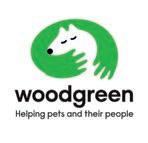
My seven-month-old, very bouncy cross-breed is getting himself into trouble. He’s got bags of energy and is good-natured, but he’s been rushing after other dogs he sees on his walks, trying to interact and play with them when his presence clearly isn’t wanted! This has only just started to be a problem because as a pup his recall has been really good — is it adolescence? What can I do? I’m aware that he has frightened smaller dogs with his exuberance and they have reacted aggressively, and I don’t want this to happen. Is my only option to keep him on a lead all the time?
Adolescence usually kicks in any time after about six months of age. It’s a period where the dog suddenly realises there is a life outside and away from his devoted owners. The cute puppy who wouldn’t leave his owner’s side is now ‘spreading his wings’ and often doing it without much thought — or grace!
Adolescence is necessary, natural, and normal but can be a trying time for the dog’s owners. We often socialise our puppies so they meet every dog at any opportunity. As they get older, these ‘meet and greets’ stop and the adolescent dog cannot deal with it. Therefore, frustration, such as lunging, barking, and sometimes snapping occurs and can increase
Whenalarmingly.apuppyis young, it is good to apply a ‘one in three’ rule. This means for every





three dogs the puppy sees, he gets to meet one (with the other dog owner’s consent). ‘One in three’ stops the anticipation and expectation that every single dog will be approached in future. You can apply a similar rule for your adolescent pup. If the dog is a similar size, ask the owner if the dogs can say hello. Allow them to sniff but be ready to guide your dog away if he gets too boisterous. For the other two dogs he is denied access to, you can drop a tasty treat on the ground for him to enjoy instead. Soon other dogs predict treats from you and he will look at you rather than lunging. You can become smart with the treat placement and gently toss it away in the opposite direction to the other dog. This redirects your dog, provides a distraction, and builds counter-conditioning. While carrying this out in the park, consider training a solid, reliable recall using a long line.
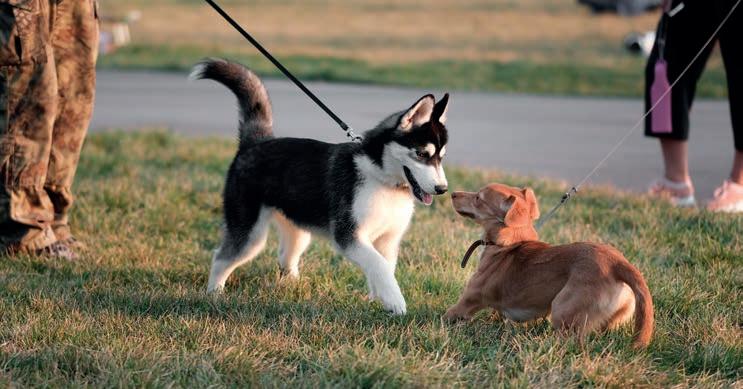 HamsterAdvice
An enriched life will help hamster health.
AdviceDog
Bouncy adolescents can make other dogs anxious.
HamsterAdvice
An enriched life will help hamster health.
AdviceDog
Bouncy adolescents can make other dogs anxious.
www.petproductmarketing.co.uk
Customer Q&As October 202226












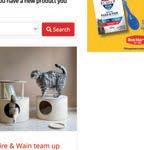












todaySignPPMwww.petproductmarketing.co.ukeshotsGetweeklynewsandproductslaunchesupat For more info visit www.markandchappell.com, email us at info@markandchappell.com or call 01582 583888 Variety PackNEw Treats that won’t nibble away at your margin • Offers your customer the opportunity to buy more for less • VETIQ® Nibblots - Brand Leading Small Animal Treats • Four varieties give the pet parent choice to treat their little friends • Great value for your customer and variety for their pet • Colourful, impactful pack drives customer sales • Uplift your average purchase level. Same work, more spend.
Sleepless nights
Herbie, my moggy, is waking up at night. Sometimes he will wake us up and want feeding or letting out (we shut the cat flap at night). How can we get him to sleep through the night and not disrupt our sleep?
It’s no laughing matter to be regularly woken up by your cat to the point where you are sleep deprived, so I really feel for you.
BehaviourCat
Make your cat’s night-time area as appealing as possible.

A cat’s natural body rhythms make it more active at dawn and dusk and during the hours of darkness. But this feline sleep-wake cycle can unfortunately be completely out of sync with that of their owners who (with the exception of night workers) are active during the day and sleep at night. Some cats do adjust to a more diurnal sleep/wake cycle, but others don’t, and it sounds like Herbie may be one of these. The good news is there are things you can do but you will have to have a steely resolve!
Currently, when Herbie wakes you up, he knows that he’s going to get food and attention, and this is exactly what he wants. In other words, he has been rewarded for waking you up. And with such a successful strategy there’s every reason for him to continue to do it, night after night. If you don’t acquiesce to his demands, he will eventually learn that trying to wake you up earns him no reward and the behaviour will stop. However, it’s important that you put in place an alternative routine for him.
From here on in, Herbie should not be allowed access to the bedroom at night. Instead, you can create a lovely sleep area for him which contains all his important resources such as a litter tray, scratcher, food station, water bowl, and different toys each night. For additional interest, a cardboard box or paper bag (handles removed) could also be placed in the area for Herbie to explore, containing a surprise, such as a toy, treat, pinch of catnip for him to find. If Herbie enjoys warmth, the best present you can give him would be a low voltage heated pet pad covered by a lovely fleecy blanket. Having this switched on in his new sleep area at night is very likely to make him want to stay put!
If Herbie starts meowing (and this might be loud!), it is because he is frustrated at his inability to wake you up and be rewarded with your attention. It’s vital at this time that you don’t respond in any way, even intermittently, as this will make the problem extremely difficult to resolve. I usually advise the use of earplugs when owners go to bed! However, there should be sufficient interest in his night-time area to satisfy him. A good night’s sleep is so important not only for your physical and mental health, but for your relationship with your cat!
Gone off the litter tray
My cat has stopped using her litter tray! Why would this be? She was happily using it before but for some reason, she is now toileting in the bath and once in our living room!
Finding unexpected gifts from our cats of the toiletkind can not only be unpleasant for cat parents but trying to figure out why it’s happening can also be very frustrating. When a cat starts soiling outside of her tray this is typically caused by one or a combination of the following:
● A medical issue. I always recommend a trip to the vet to rule this out before trying anything else.
● A lack of conditioning to a litter tray as a kitten. As your cat has been using her tray, it seems unlikely that this could be the problem.
● Something about her current toilet facilities that your cat doesn’t like. Is there anything about her litter tray set up that’s changed recently, such as a new type of litter tray that differs from the former tray (eg hooded versus open); it’s location; the type of litter used; the frequency of urine and faeces removal; a change in the way it’s cleaned; or the sudden introduction of litter tray liners and/or deodorisers?
● A bad experience while using the tray. Perhaps something happened while she was toileting that frightened her, and she now associates using the tray with this scary experience.
BehaviourCat
● Stress or anxiety which, in susceptible cats, can go straight to their bladder. There are a number of things that can cause stress, including competition with other cats over resources and territory; changes in routine, changes to the physical environment and/or to the emotional dynamics of a household.
Pinpointing when it first happened and what was going on at that time, such as building works, home decoration, or some other upheaval can also help to determine what might have initially triggered it.
To address the problem, it would be a good idea to re-assess her toilet facilities. A large open tray in a quiet, private location, which contains a soft, fine clumping cat litter and which is well maintained, should be enough to encourage her to use it consistently.
If you have the space, a second tray in a different location will give her a choice about where she goes. Ensure your cat isn’t allowed back into the rooms in which she has soiled for a period of at least three months, and she is consistently using her tray. Avoid using any ammonia products to clean the soiled areas as this might attract her back to those sites, assuming you’ve not remembered to close the doors!
Reducing anxiety and promoting self-confidence through stimulating activities may help reduce any anxiety she’s feeling which is adding to the problem. If you follow these guidelines and the behaviour persists, it’s time to seek help from a behaviourist.
Stressed by grooming
After a couple of grooming sessions, my groomer has suggested my dog may need to wear a muzzle when being clipped. She explained that he seems quite stressed by the procedure and was trying to snap at his handler. At first, I was very upset, as he’s a lovely dog at home and always friendly, but the groomer was very nice about it and said it was not uncommon. She even suggested I bring him into the groomer’s a few times initially just to sit and watch what goes on, without having any trimming done.
Is it common for dogs to wear muzzles at the groomer’s? And what can I do to make him less stressed about the process?
Unfortunately for some dogs, grooming can be a very stressful process. It is really invasive
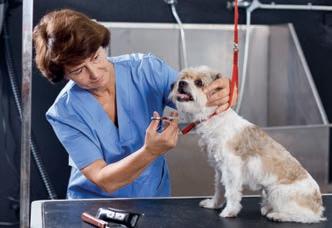
How important is it to exercise your dog’s brain?
Very — particularly for clever dogs and herding breeds.
Canine quick fire questions!Therearelotsofactivitiesdogscando!
As one dog trainer explained: “A stroll around the block is comparable to saying to Einstein: ‘Did you know one and one is two?’ and then wondering why the dog is frustrated!”
Any suggestions on exercises and activities I can try to keep my dog at his optimum weight?
Plenty of exercise should help keep him trim but if he’s already overweight or obese, seek your vet’s advice first, start slowly, and then build up. Things to try include:
● On-lead walks. ● Hiking. ● Jogging. ● Rally. ● Agility.
● Dog parkour. ● Hydrotherapy/swimming. ● Scent work.
● Hoopers. ● Playing. ● Introducing challenges, such as training your dog to jump through a hula-hoop, or making him work to find his food.
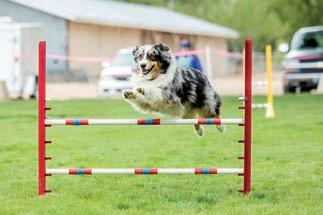
How can I ensure my dog is safe during dark and gloomy weather?
Be as visible as possible out on your walks — not just when it’s dark at night, but during the day as well; weather conditions such as rain, mist, fog, and overcast skies can also make you hard to see. Choose high-vis garments and accessories with both fluorescent and reflective fabrics, and don’t forget to kit out your dog,too. There are plenty of accessories to tog him up in, including jackets, collars, harnesses, and covers to slip over his lead. A torch of some kind ensures you can see where you’re going as well as being seen; one that fits on a headband will leave both your hands free. Add armband lights, flashing heel clips, or ankle lights for head-to-toe visibility. Lights are also available for dogs as collars, harnesses, and clip-on lights.
Any tips on how I manage my puppy’s undesirable behaviour?
When faced with an unwanted behaviour, abide by these rules:
● Control and manage the environment so puppy is unable to practise the unwanted behaviour.
● Don’t inadvertently reinforce unwanted behaviour.
● Don’t punish unwanted behaviour; get your thinking cap on and come up with a plan of how you can reinforce a mutually exclusive behaviour in its place.
Do female dogs have a menopause?
No, unlike humans, female dogs do not have a menopause and, unless neutered, they continue to have seasons throughout their lives. If these continue for longer than usual, or stop altogether, consult your vet.
for them, with a groomer having to handle every part of their body from the nose to the toes. Even if your dog is lovely at home, he may not enjoy the grooming process. Desensitisation is the key; he has to be comfortable being touched all over his body and this is something you can practise at home. Using your hands, ensure that when you stroke him you touch around his mouth, his ears, his paws, his back end — everywhere! Your groomer may have attended complementary treatment lessons, such as reiki or Tellington Touch, which can be very calming and this is something you could look into too.There are natural calming products available that could also be useful. I’ve found Comfort Blend and Calming Floral Spray by Vita Canis work really well to help with the stress of a groom.
A muzzle is used to not only protect the groomer — whose hands are super-important to them if they are to be a groomer for any length of time — but also to protect your dog from injuring himself on sharp scissors or clippers. Muzzles are not ideal and no groomer likes to use them unnecessarily, but in some instances, there is no alternative.
If your dog is a breed who requires regular grooming for welfare purposes, then he will have to learn to accept grooming in some form. Work with your groomer and, if necessary, a behaviourist and hopefully you can help resolve your dog’s worries.
GroomingDog
Some dogs find grooming a stressful experience.
Customer Q&As October 202228 www.petproductmarketing.co.uk





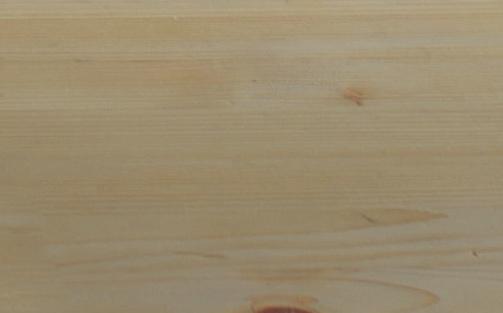


























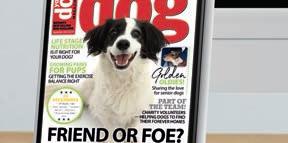


















































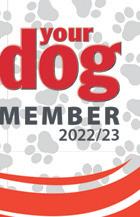







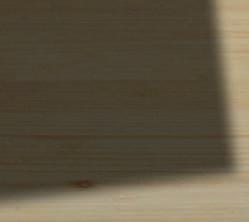
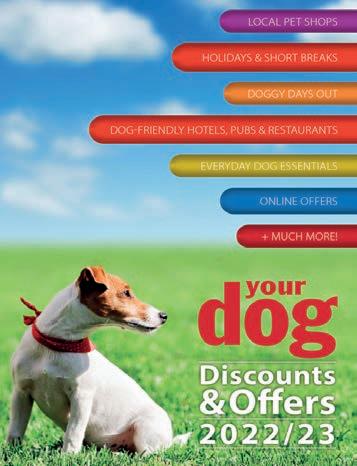



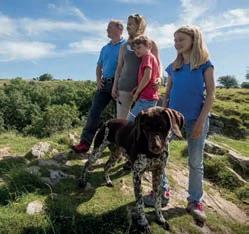












OUR JUSTMEMBERSHIPGOTBETTER!MEMBERSHIP Training guides Latest issue added every month 6,000articlessearchable 400+discountsdog-friendly A wealth of dog-friendlyadviceexpertandadventuresawaits! Members get access to our back catalogue of over 6,000 articles from the last six years of Your Dog Magazine. All articles are fully searchable making it easy to get instant advice and training guides by keywords. Each issue includes the latest behavioural advice, training tips, new dog-friendly offers and travel ideas, health and well-being guidance, and so much more! 400+ must-haveplaces,hundredsWe’veOFFERSDOG-FRIENDLY&DISCOUNTS!donethehardworkforyouandcollatedofoffersanddiscountstodog-friendlyincludingdaysout,shortbreaks,andessentials. WHAT’S INCLUDED? To find out more, or to become a member, visit WWW.YOURDOG.CO.UK/PPM A£10JUSTYEAR! ACCESS OVER 6,000 ARTICLES LATEST ISSUE ADDEDMONTHEVERY To add your retail store to our partnership, email Kay: kay.cotterill@warnersgroup.co.uk Special trade offer
transformed.LEADING LADY
Heartbroken after the death of their two beloved Labradors within a short space of time, Andy Fretwell and his husband, Andy Ashley, didn’t know which way to turn.
The couple’s grief from losing Missy at 19 was temporarily muted by the shock of nine-year-old Jackson being diagnosed with cancer of the spine just four days later.
“It was such a sad time,” recalled Andy Fretwell, who co-runs Diva Productions, a West Yorkshire-based, award-winning theatre company. “We weren’t expecting Jackson’s limp to be terminal — the vet estimated he had just two weeks to live.
“Despite being shellshocked, we threw all our efforts and energy into caring for Jackson. We researched how to look after a dog with cancer and fed him the best raw food.”Infact, thanks to the pair’s care and devotion, their yellow Labrador astounded vets by living for a further six months.
When the day finally came to say goodbye, the two Andys struggled to cope with their grief.
“On the day Jackson was put to sleep, we had to go straight to rehearsals for our production of ‘Phantom of the Opera’ as we couldn’t let the cast and crew down,” explained Andy, from Woolley, near Wakefield in West Yorkshire.

“It forced us to concentrate on something

else but when we got home that evening, the house was so empty — his bowl of water was still there with all his dribbles around it.”
The couple found they grieved for both dogs when Jackson died.
“It was unbearable,” continued Andy, 39. “Two weeks later, I turned to Andy and said I couldn’t cope without a dog in the house. To my surprise, he agreed.”
Following an in-depth discussion, both decided they didn’t want a puppy, preferring to go down the rescue route.
“I googled local canine charities and came across Dogs Trust Leeds,” said Andy, who admitted he felt guilty looking for a dog so soon after losing Missy and Jackson.
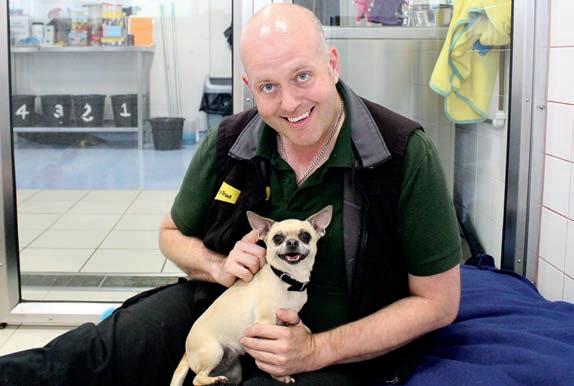
“We were open-minded about the breed but we agreed we didn’t want a Labrador to compare to ours.”
Neither were keen on a small breed, recoiling at the thought of being seen as a stereotypical dog-owning gay couple. After calling the rehoming centre, the two Andys went along for an interview and to look around.Andy

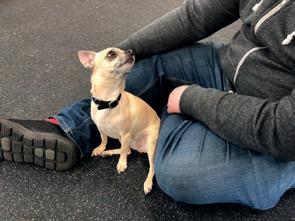
continued: “In the first pen on the right, we saw a tiny cream dog facing the other way. She turned round and came and put her paws up on the glass. In that instant, we both fell in love with her.”
Thinking they perhaps shouldn’t choose the first dog they’d seen, Andy and his husband spent an hour and a half looking at the other canine samecoming“Butresidents.wekeptbacktothelittlecream
dog, called Cheeka,” said Andy, who asked his husband if he thought they would look silly carrying a Chihuahua. “But he replied: ‘It doesn’t matter what anyone else thinks!’”
Friendly nature

Cheeka had been found just the week before, in June 2019, wandering the streets of Harrogate. Thought to be aged around five, not much is known about her history. However, on arriving at the centre, the sweet dog’s sociable and friendly nature instantly melted the hearts of all the staff.
Feeling a strong connection, and not wanting to lose Cheeka, the two Andys immediately registered their interest.
“We were introduced to Cheeka in a



French fashion label.

“At first, Coco was hyper!” recalled Andy. “She ran inside and out and played with all her toys — her tail didn’t stop wagging and she seemed reallyAdaptinghappy.”from a large to little dog was much easier than Andy and his husband anticipated.“Bigdogssit at your feet but Chihuahuas want to be in your arms all the time, which makes you think they are more vulnerable so you feel extra protective towards them,” he added. “They may be small but they have big personalities. Chihuahuas think they’re human!”Thecouple were so enamoured with the breed that they decided to get a friend for Coco, opting for a puppy from a breeder in Thirsk. From fitting into the palms of their hands at five days old, Romeo has become a much-loved addition to their family.
“They are as thick as thieves and have taken our whole canine-human relationship to another level,” said Andy, who confessed both dogs have their own wardrobes, with outfits for Halloween and Christmas, along with winter hoodies and raincoats.
In fact, quite by chance, Coco has even made the leap from precious pet to stage star. When the couple were holding auditions for their sell-out production of ‘Legally Blonde: The Musical’, at Wakefield’s Theatre Royal earlier this year, they faced a dilemma. Who could they cast as Bruiser Woods, the pint-sized canine costar? And then it dawned on them… why not see if Coco would pass a stage test?
meeting room for 10 minutes before being allowed to play with her on our own for an hour,” said Andy, who was surprised by how protective he felt towards her.
“She kept pawing at us, wanting attention and to play with her toys. At one point, she climbed into Andy’s arms and licked his chin. We shed many tears, knowing she was the right dog for us.”
After attending their adoption talk and signing for Cheeka, the couple went home to sleep on their decision. But they didn’t sleep a wink that night and couldn’t stop thinking about the little dog who had made such a big impression.
At 8am the following morning, Andy and Andy were back with their minds 100 per cent made up, and five days later, they collected Cheeka — now renamed Coco Chanel after her new owners’ love of the
“Because we didn’t know much about Coco’s background, we weren’t sure how she would react to lights, a live band, and applause,” continued Andy, who added that the show raised £800 for Dogs Trust, to add to the £400 they collected from taking part in the charity’s ‘99k for Canines’ walking challenge last year.
“But she was fine, and was all over our leading lady. At the stage door on the first night, people were cheering and wanting to hold Coco and have their photo taken with her — she loved all the attention.”
Andy explained that Coco had her own contract, stipulating terms and conditions, such as days off, toilet breaks, access to water, an understudy, and even her own dressing
“We’veroom.since had emails from theatre groups around the UK asking if Coco could play Bruiser in their productions of ‘Legally Blonde’, but we’ve politely declined.”


However, Andy added that they would never rule out their special dog appearing in a future Diva production.
“And if the West End came calling, we’d have a rethink!” he laughed.
But for now, the couple love being dog dads to their two Chihuahuas, and feel sure Jackson and Missy are watching over them.
“It was meant to be,” added Andy. “Coco has brought us so much love. Although we rescued her, she has gone and rescued us right back.”
“
“
Two weeks later, I turned to Andy and said I couldn’t cope without a dog in the house.
Now star
Coco at the Dogs Trust Leeds Rehoming Centre in 2019 — her sweet nature won the hearts of staff members.
The first meeting.
The two Andys with Coco and Romeo.
30 www.petproductmarketing.co.uk Breaktime read October 2022
From rescue to a role in a musical, tiny Chihuahua Coco Chanel’s life has undergone a huge transformation. Joanne Bednall reports. Media.StudiosCreativeImages:
a
on stage, Coco’s life has been
same little cream
thinktheyaarmsChih“Atfashficaanhwtanallr
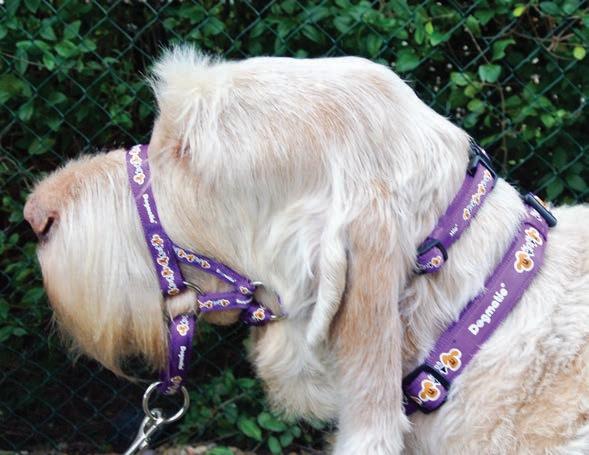






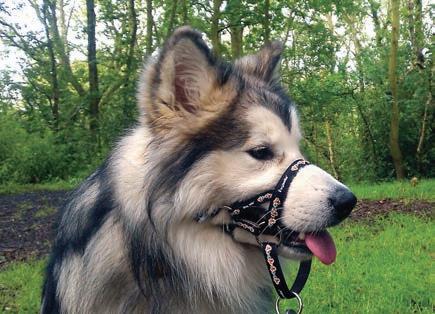
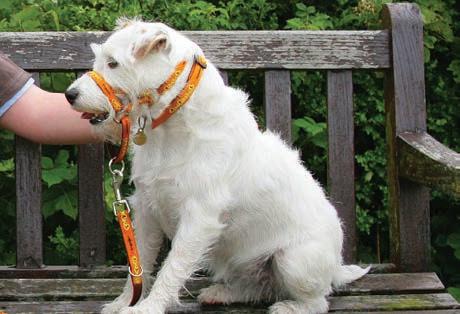









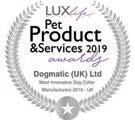
Start stocking Dogmatic’s award winning products TODAY! Your Customers deserve the BEST so call today Recommended by Trainers, Vets, Behaviourists & Rescue Centres. Available in Original Leather and Padded Cushioned Webbing all in various colourways. Matching collars and specialised leads also available offering added security and confidence throughout the winter months. Endorsed by Dr David Sands BSc PhD CFBA Fellow of the Canine & Feline Behaviour Association Call to join the ever growing number of Retailers changing to Dogmatic on 01952 245330 or visit us at www.dogmatic.org.uk NO MORE PULLING • NO MORE RIDING UP • NO MORE RUBBING NO MORE COMING OFF • NO MORE DISCOMFORT 9 TIMES WINNER OF ‘Product I can’t live without’ Excellent Profit Margins with Low Minimum Orders Most CollarInnovativeDogManufacturers2019AWARDEDManufacturer‘BestDogCollar2020-21-UK’ Dogmatic UK Ltd is on FacebookWinners 2013-2022 WINNER 2020 Global 100 Best Dog Collar Manufacturer 2020 – UK

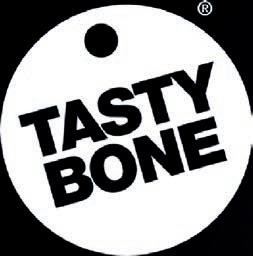



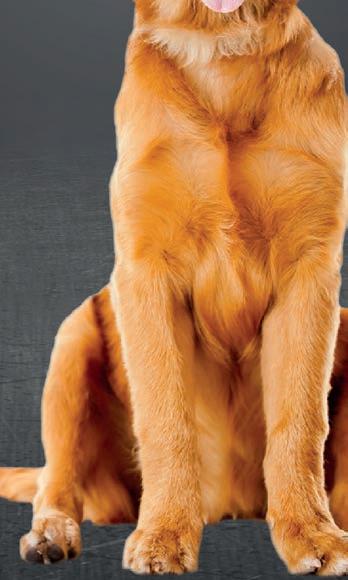









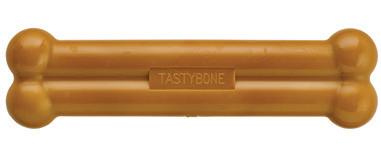
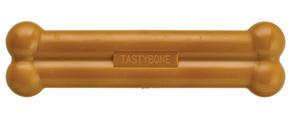
A BONE FOR EVERY DOG www.tastybone.com @TastyBone MEGALARGESMALLSUPERTOY TOUGH NYLON CHEW TOYS FOR DOGS OF EVERY SIZE IN OVER 30 FLAVOURS FLAVOURINTENSETOTHECORE For more information about TastyBone products and stocking deals please contact your Pets Choice representative on 01254 54545 or email sales@petschoice.co.uk

